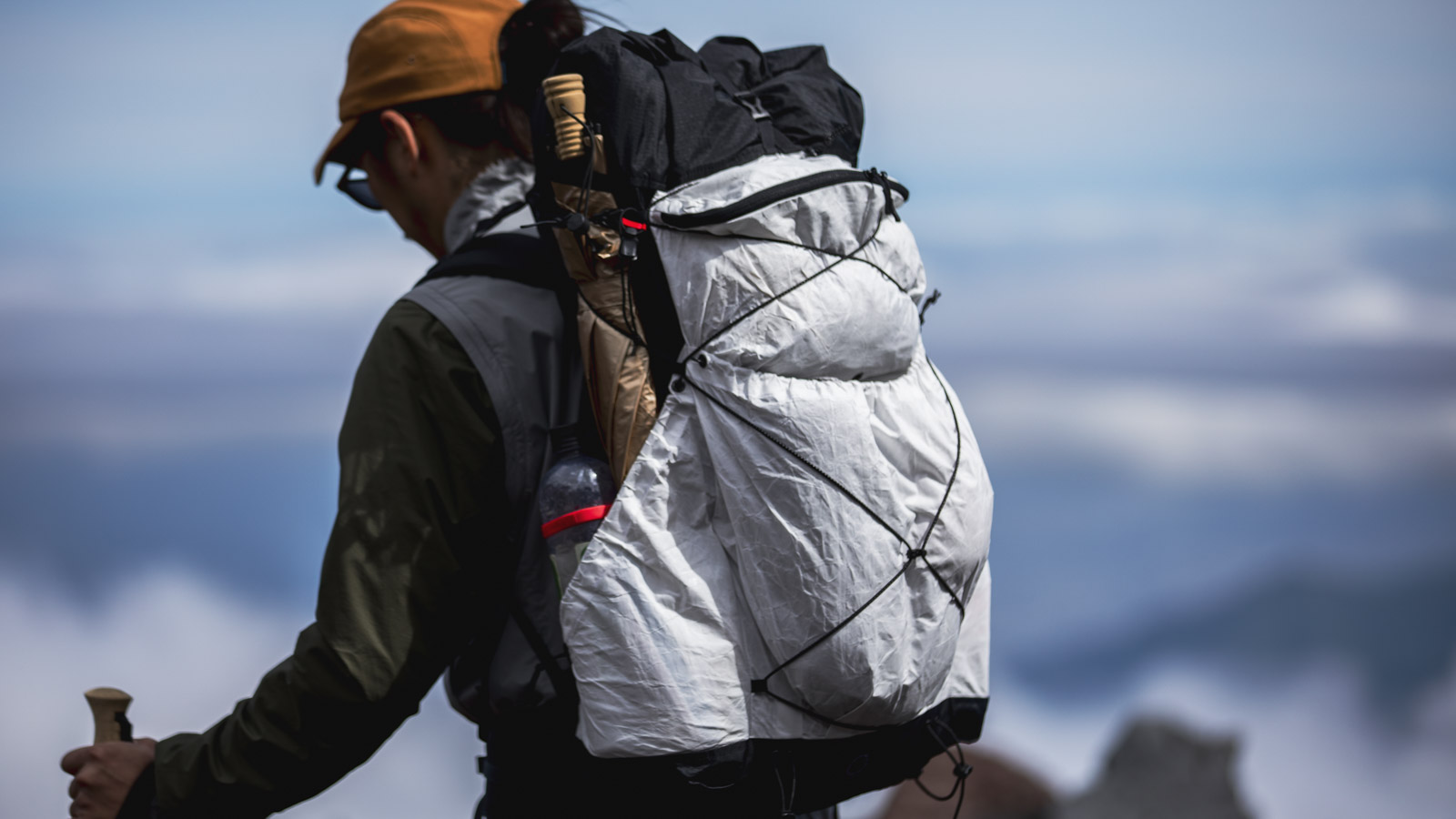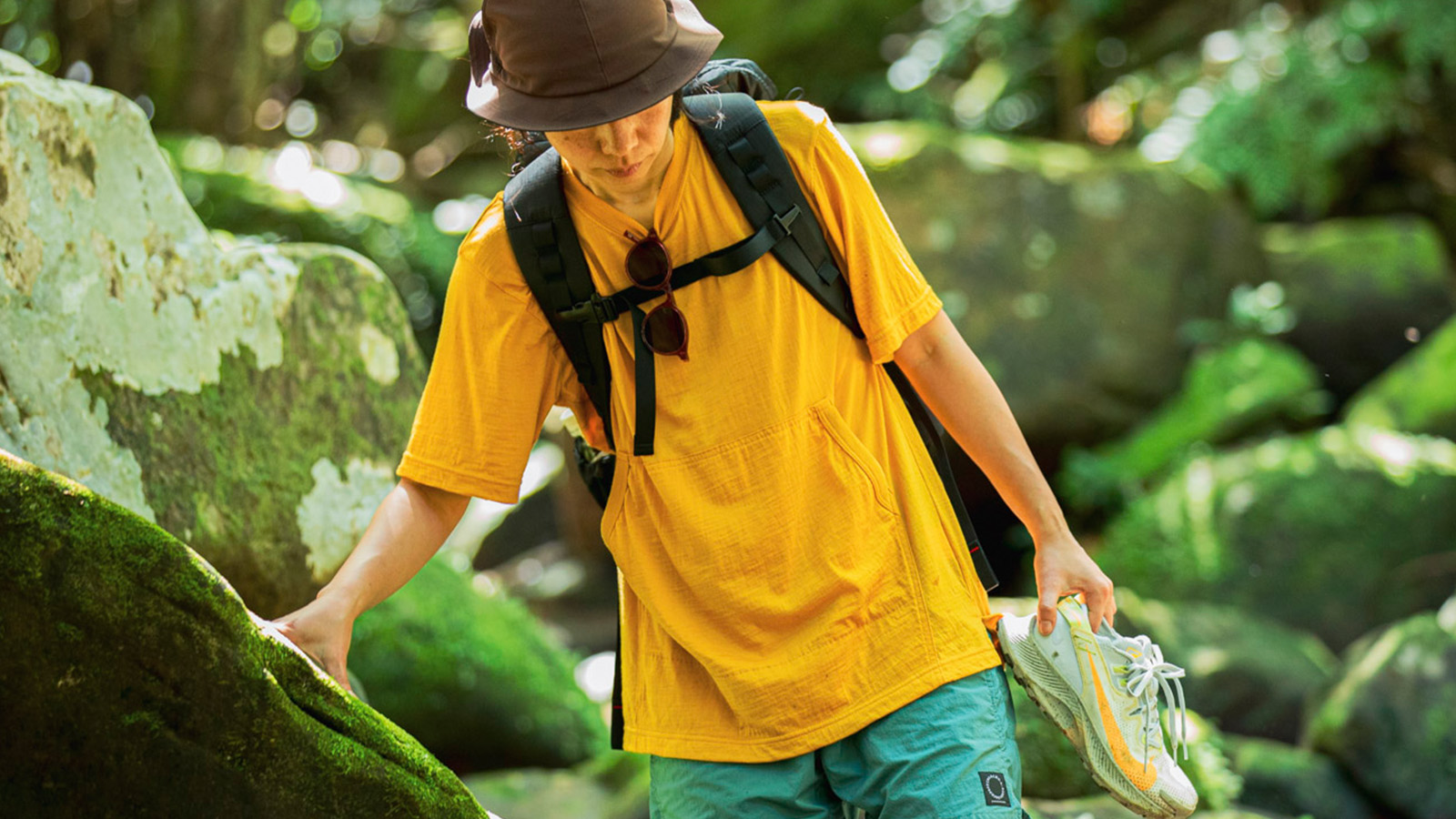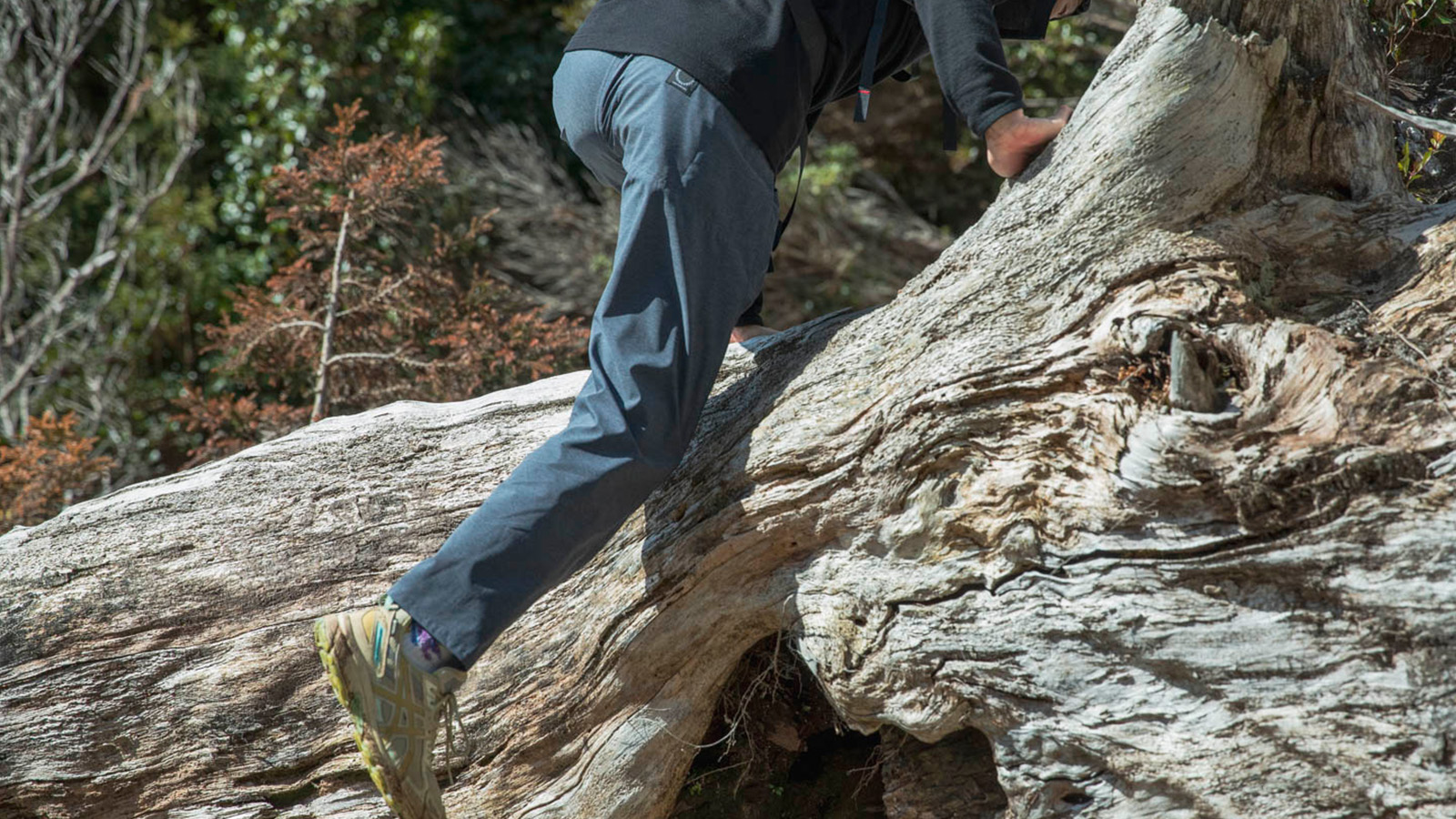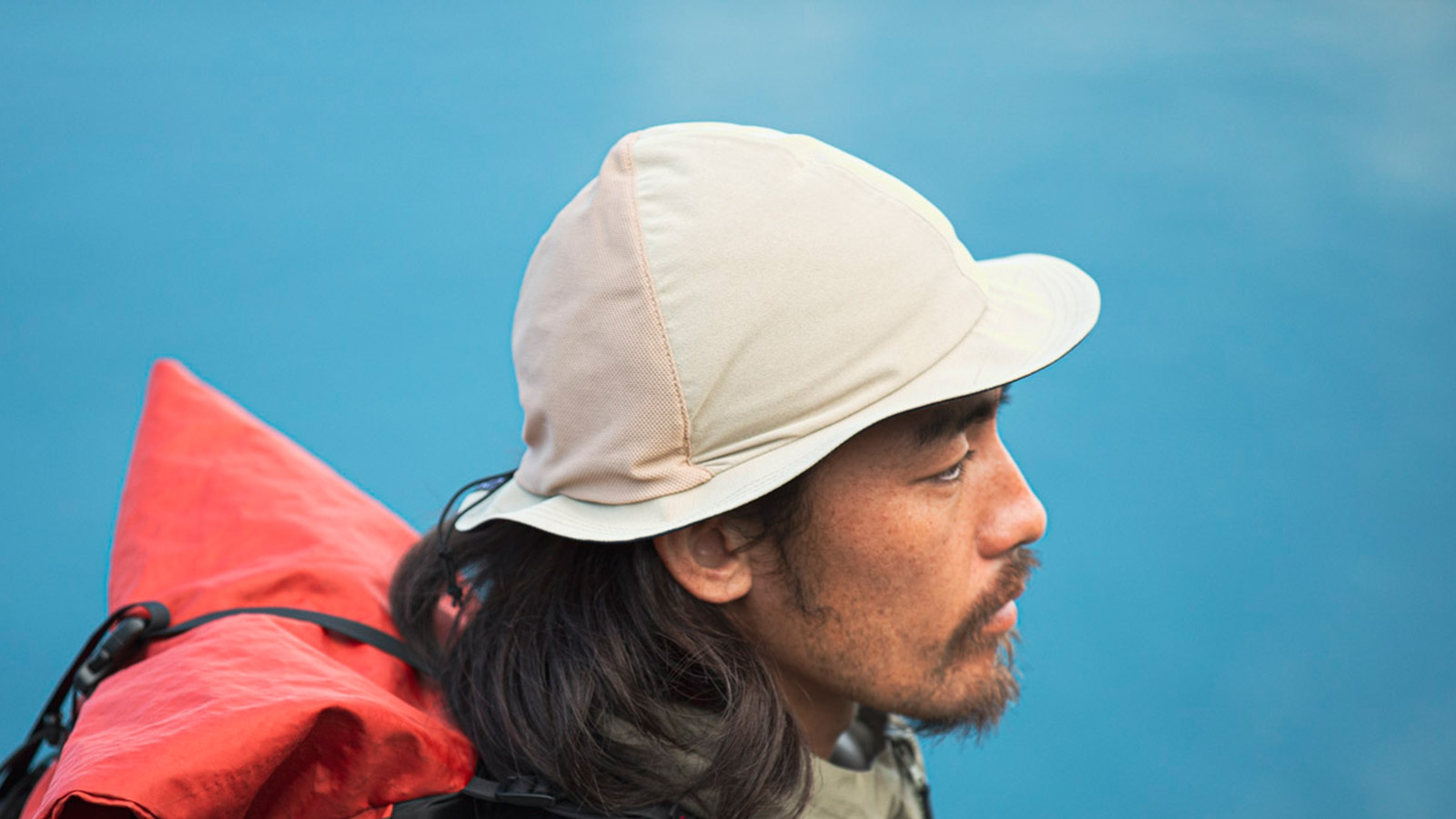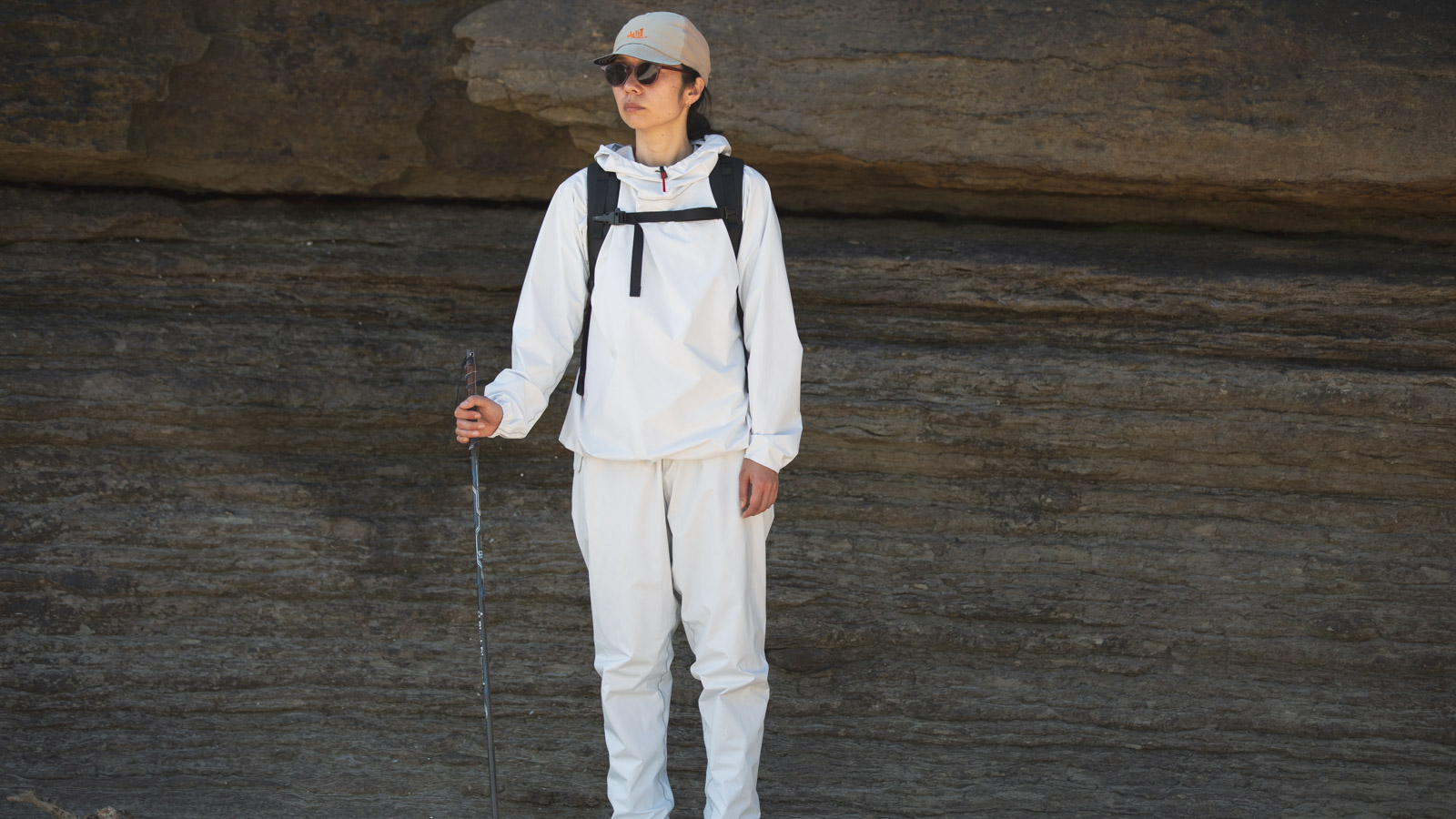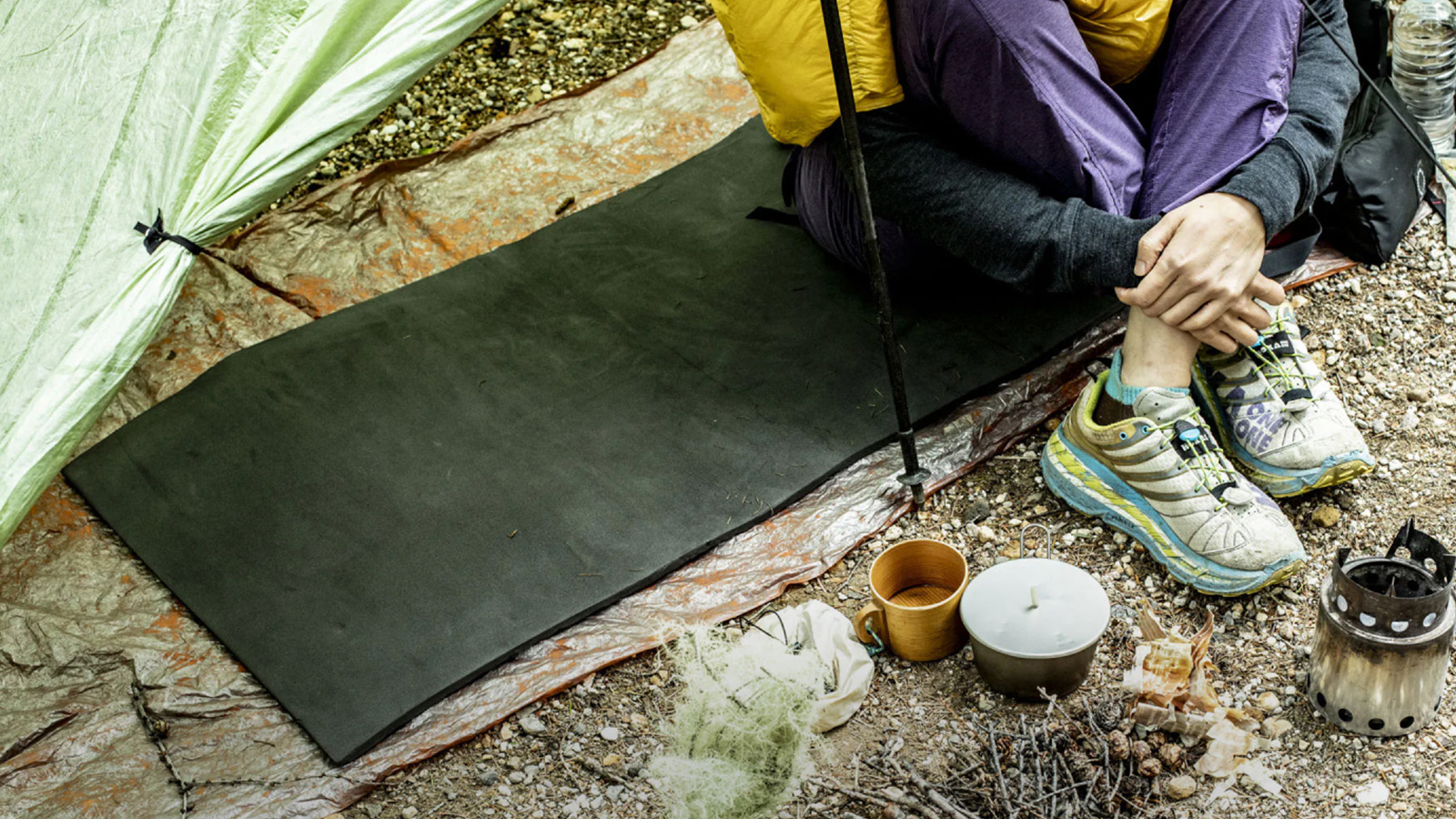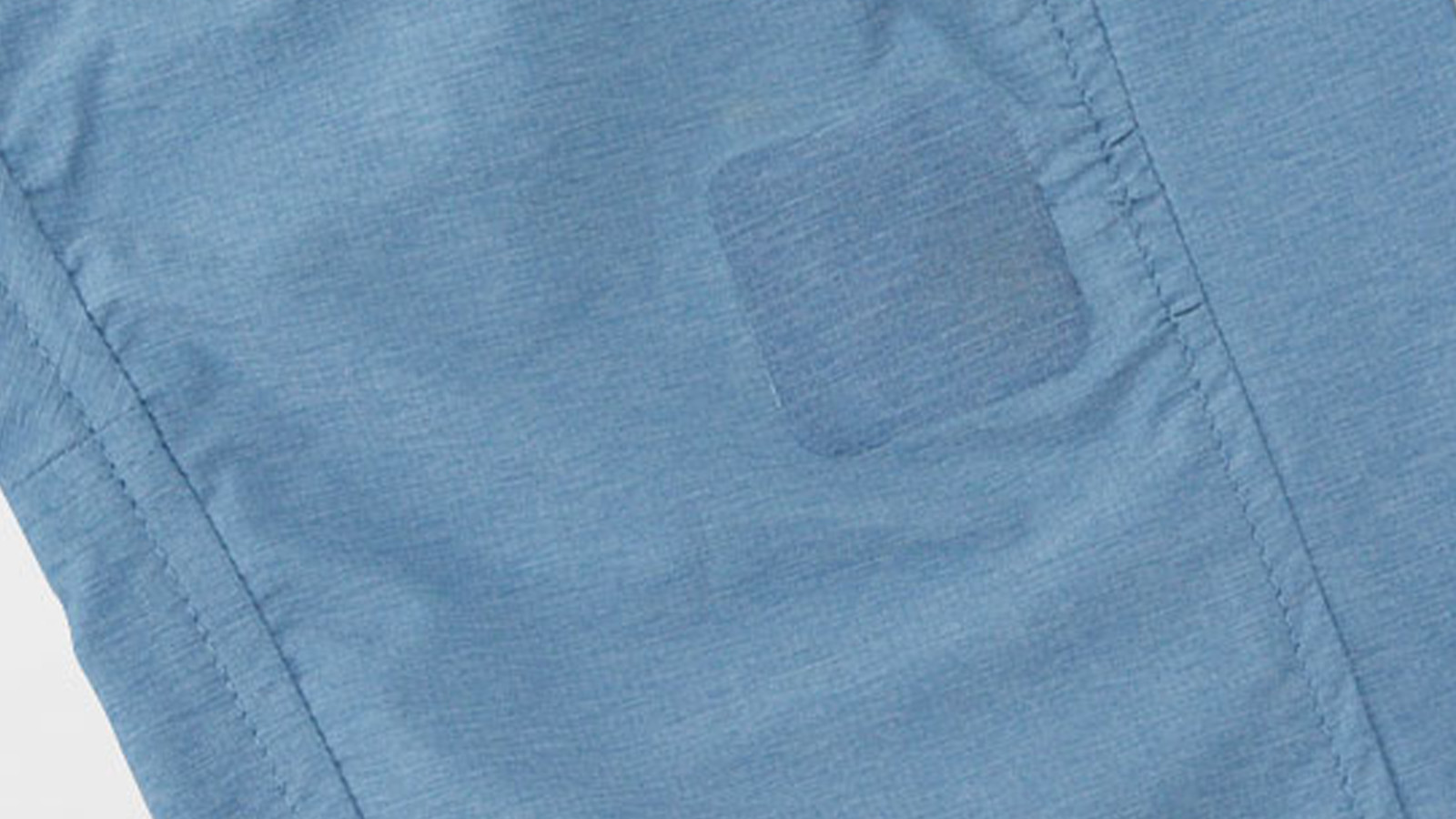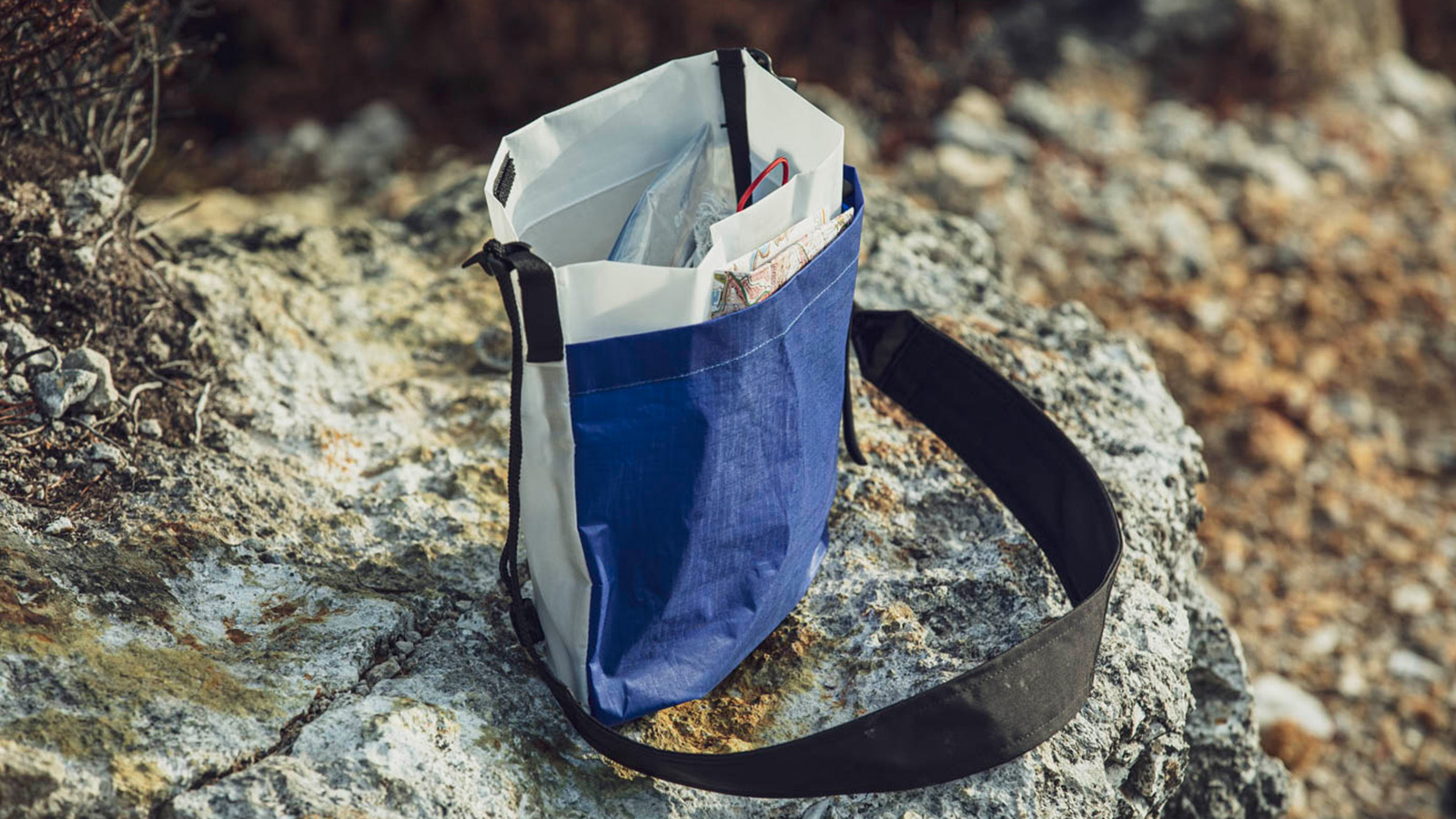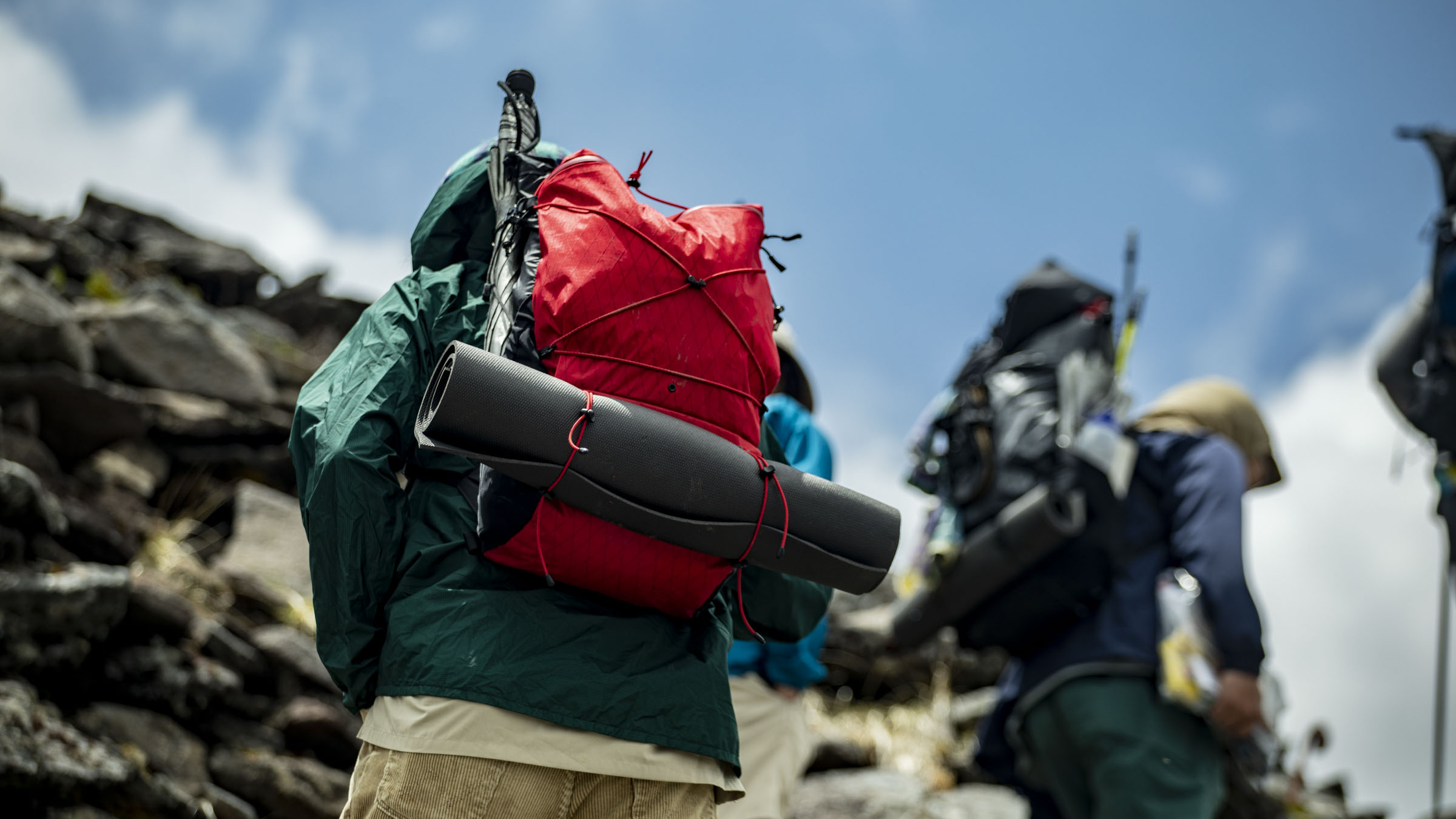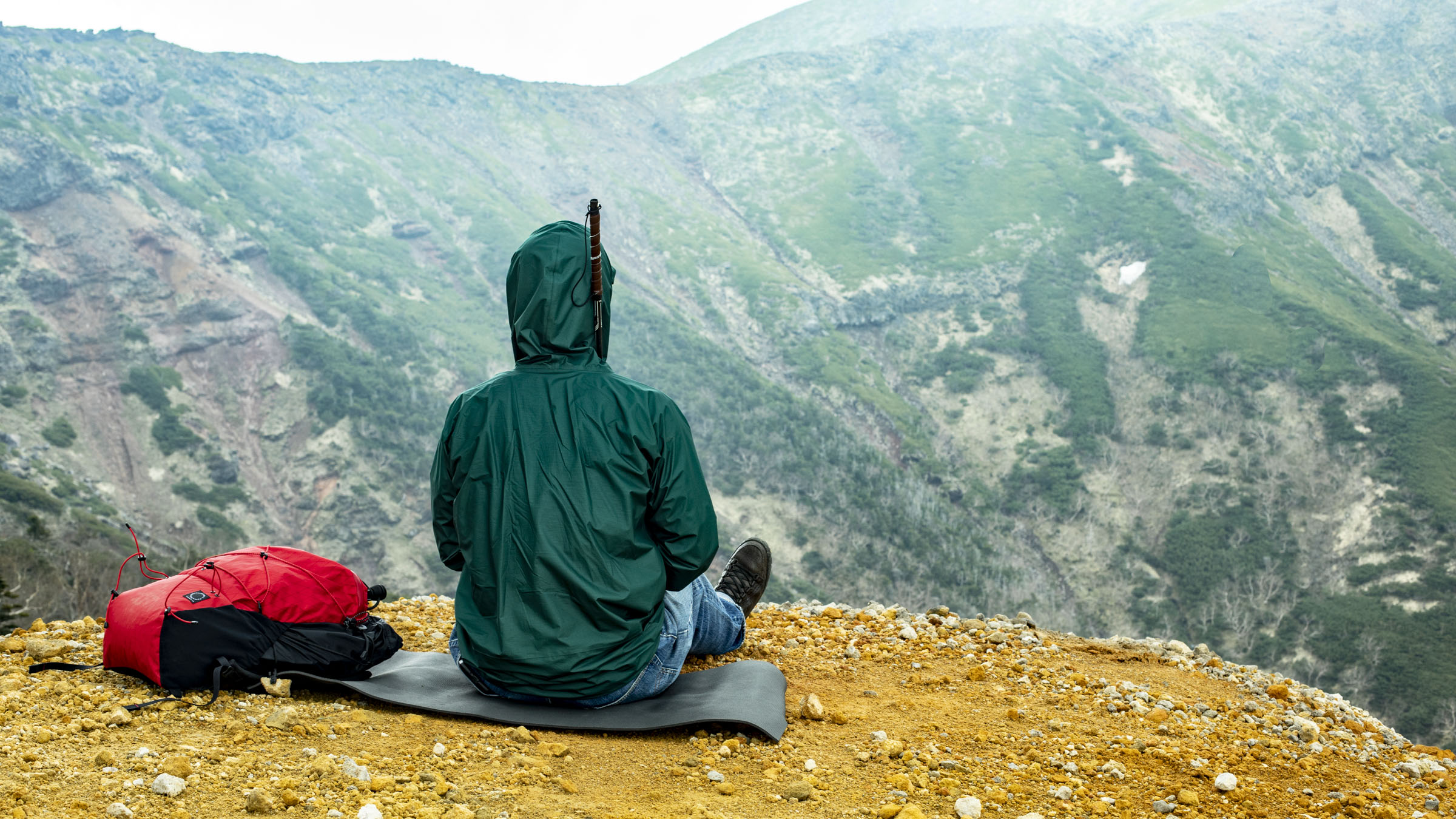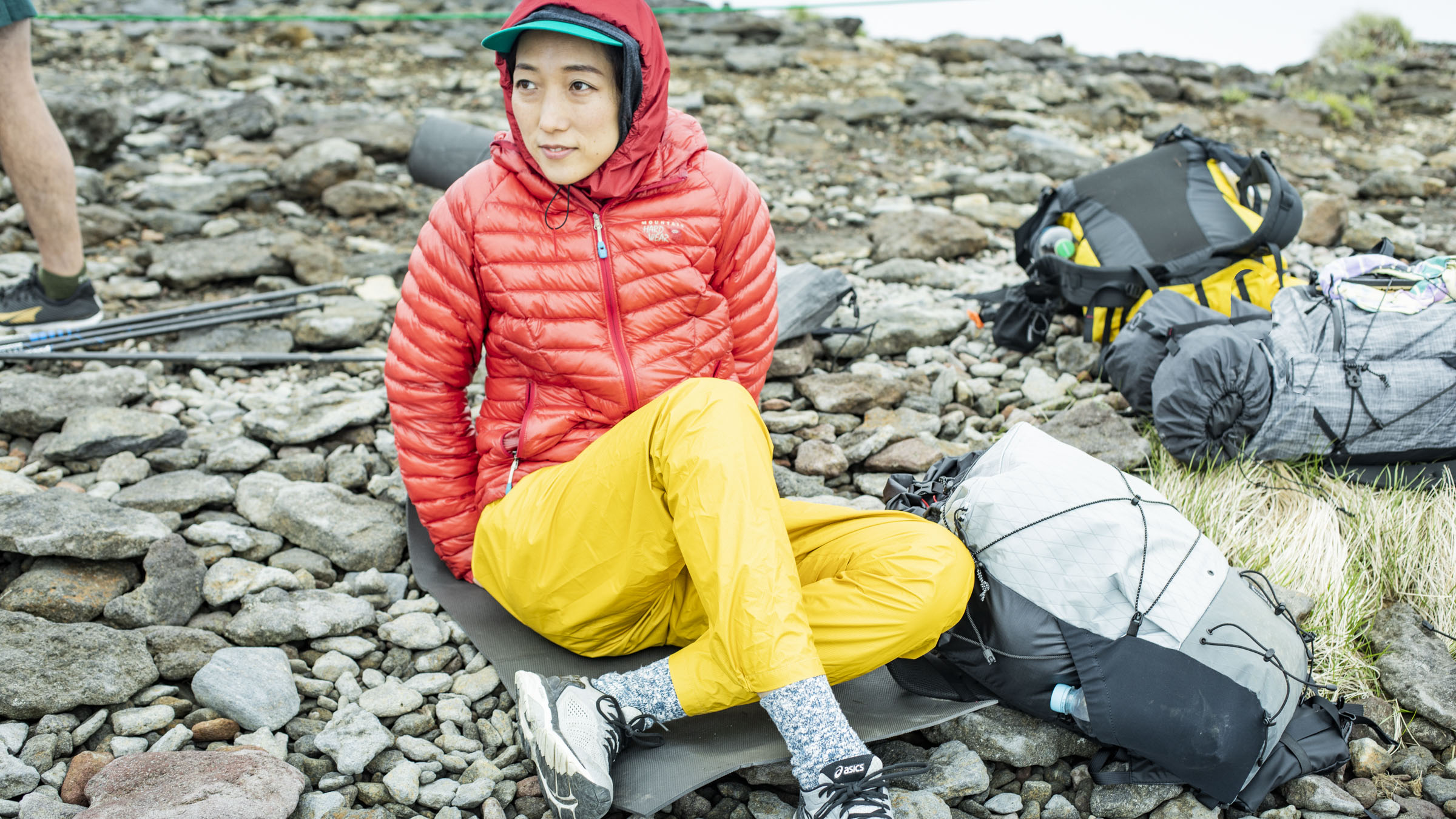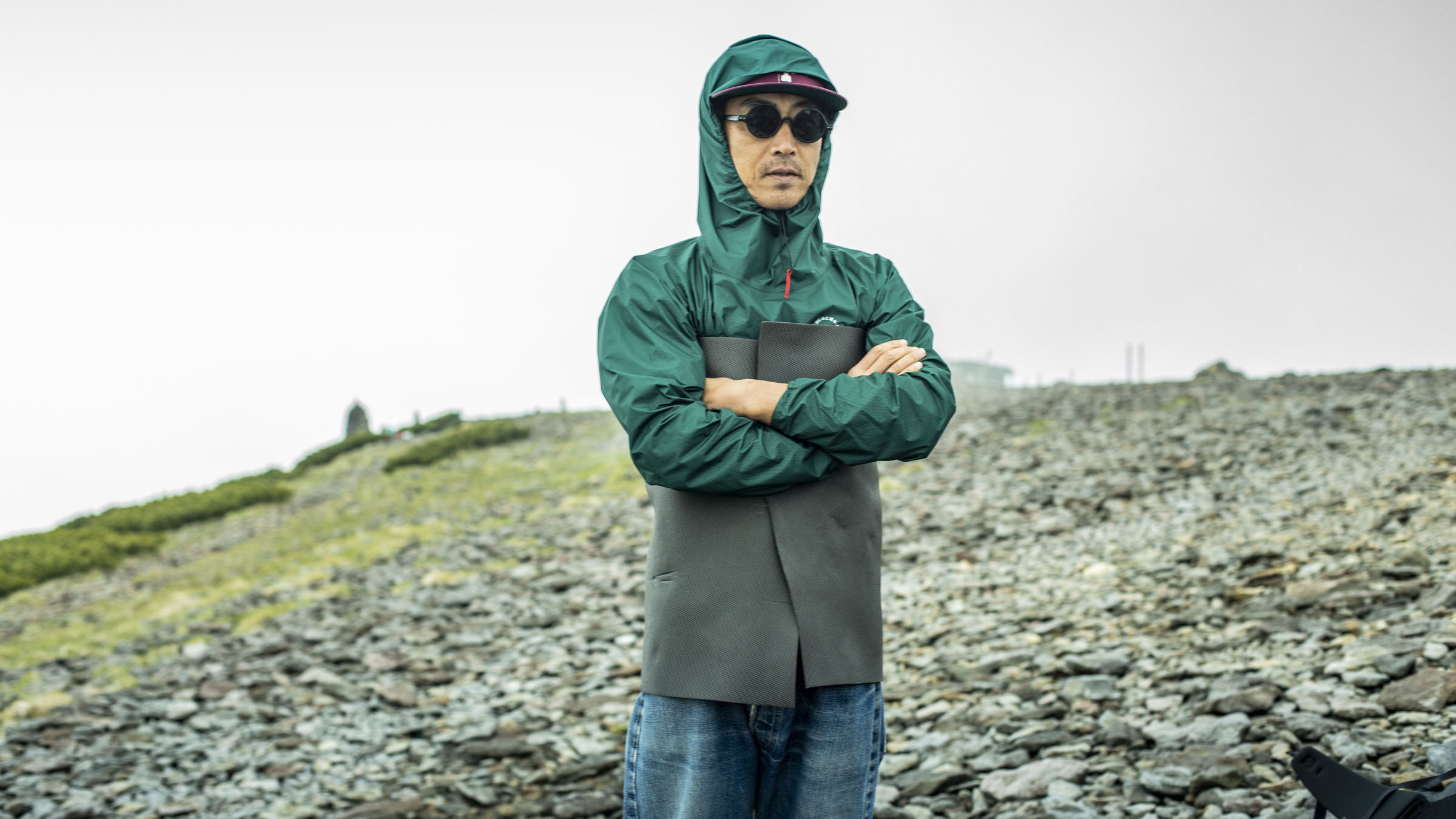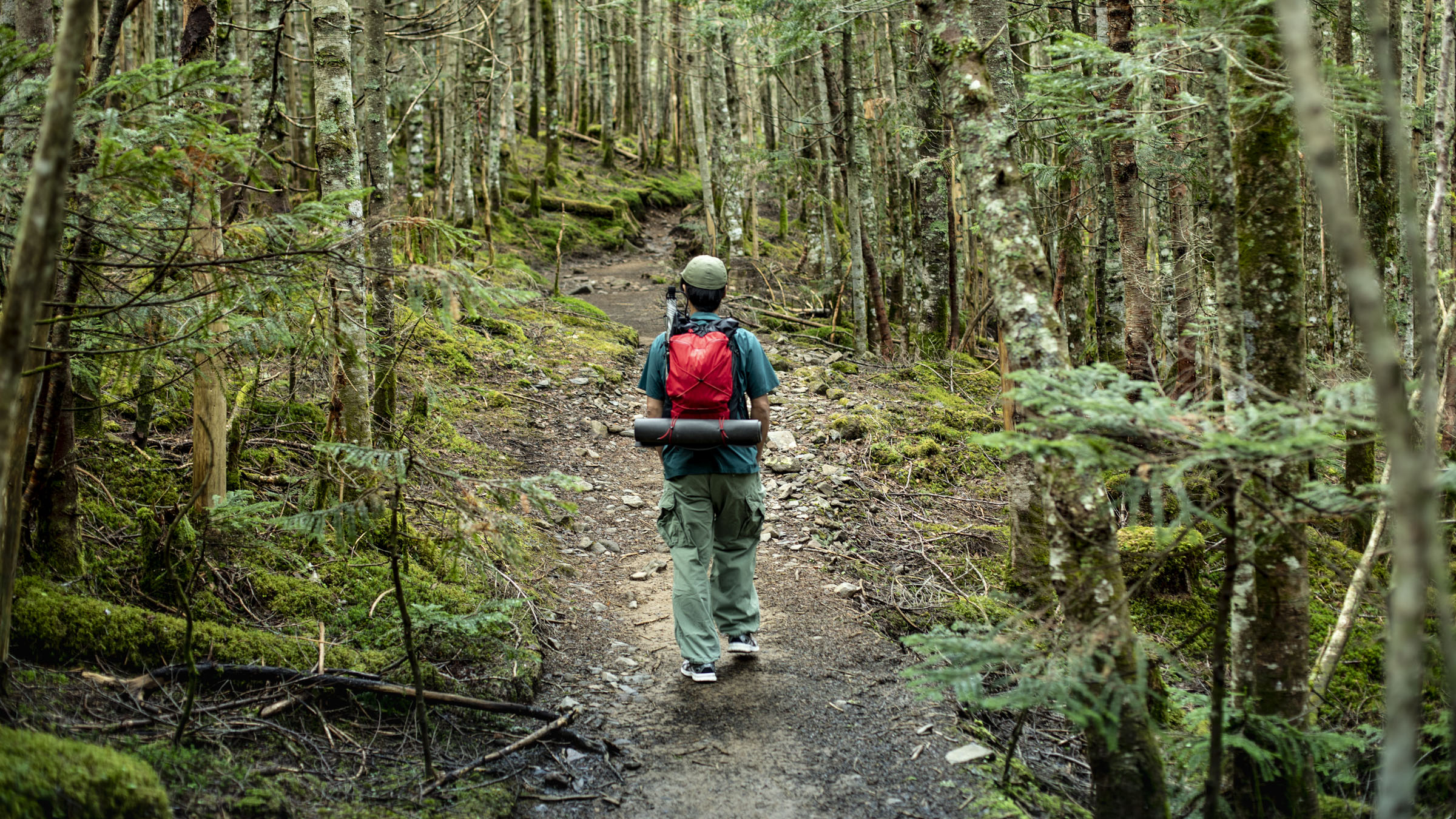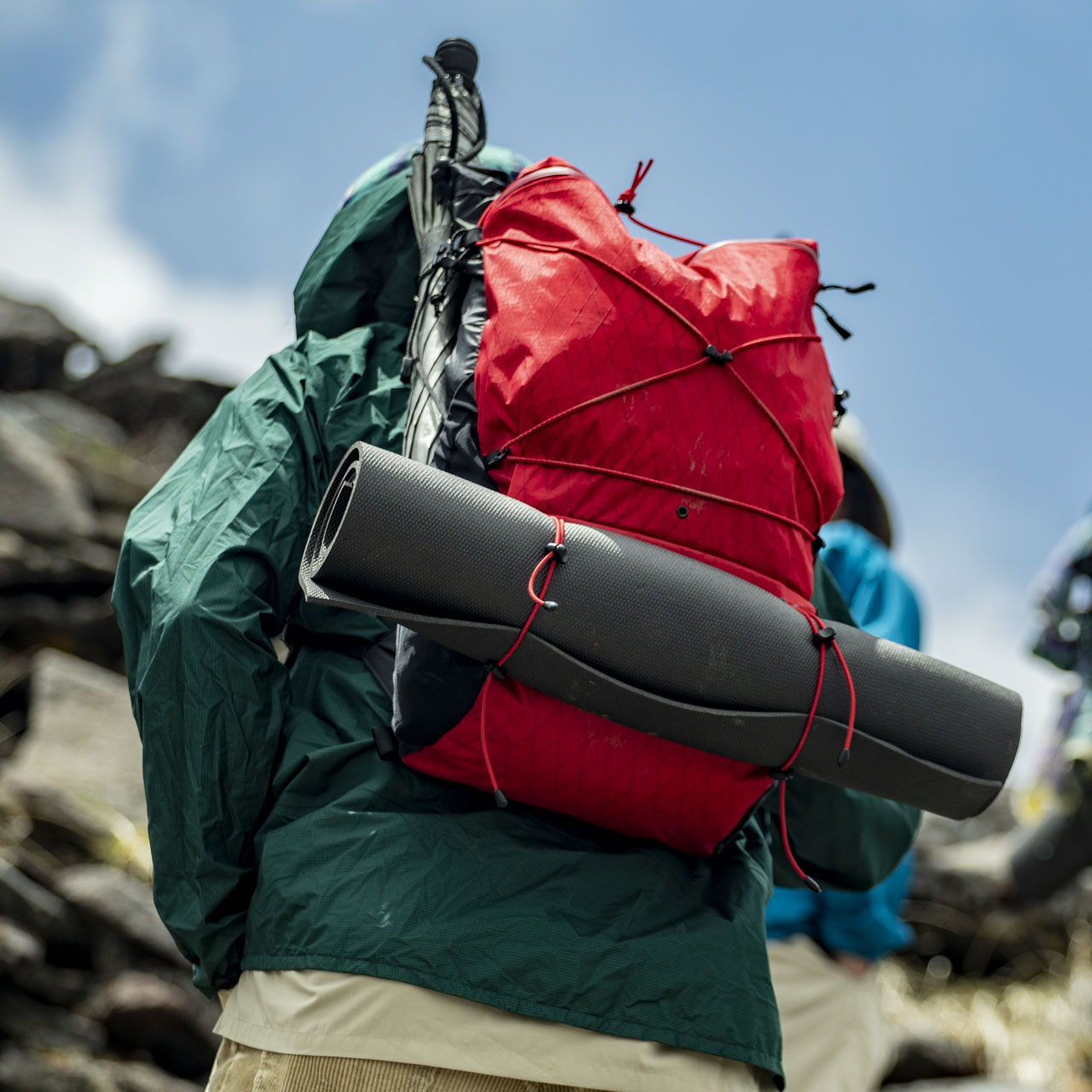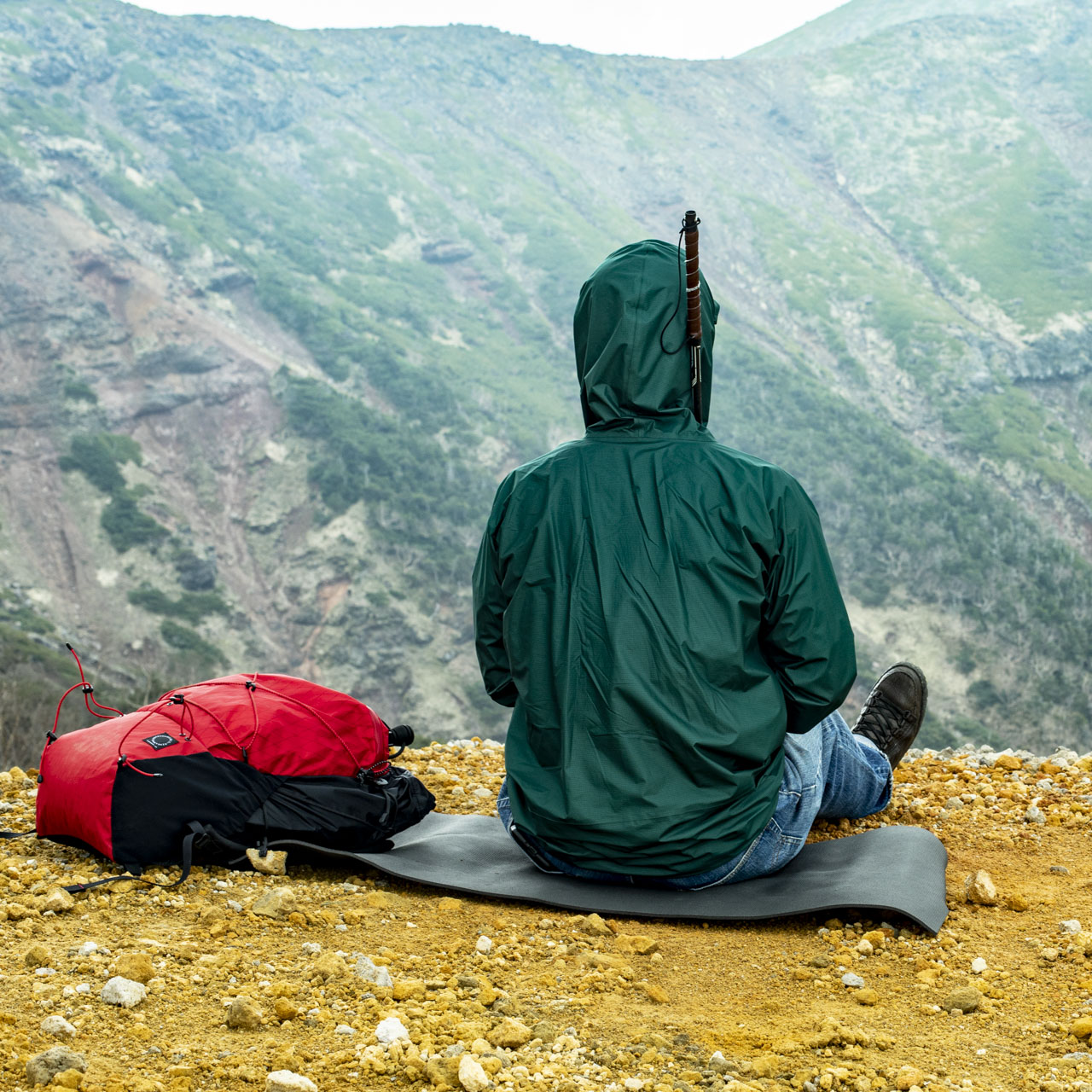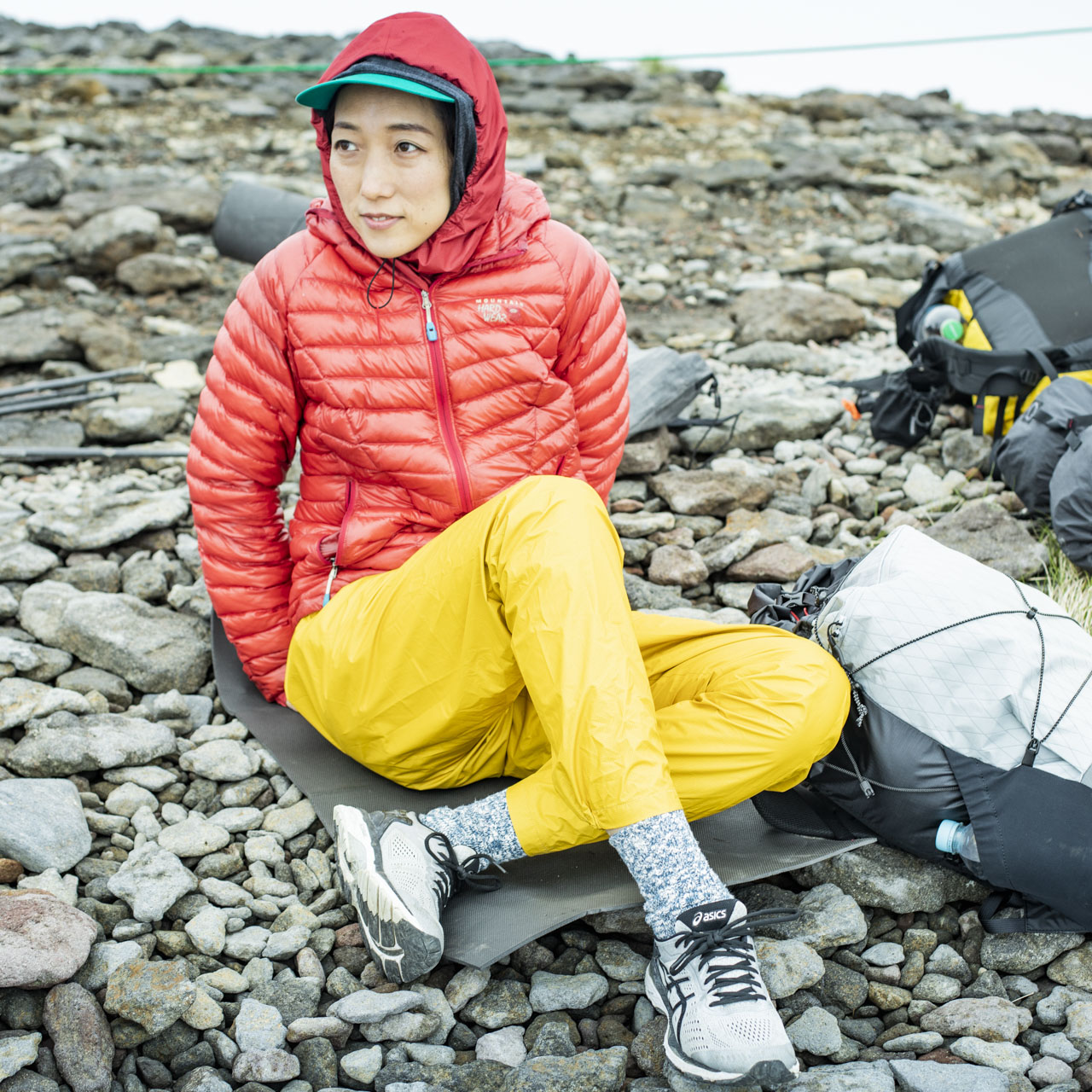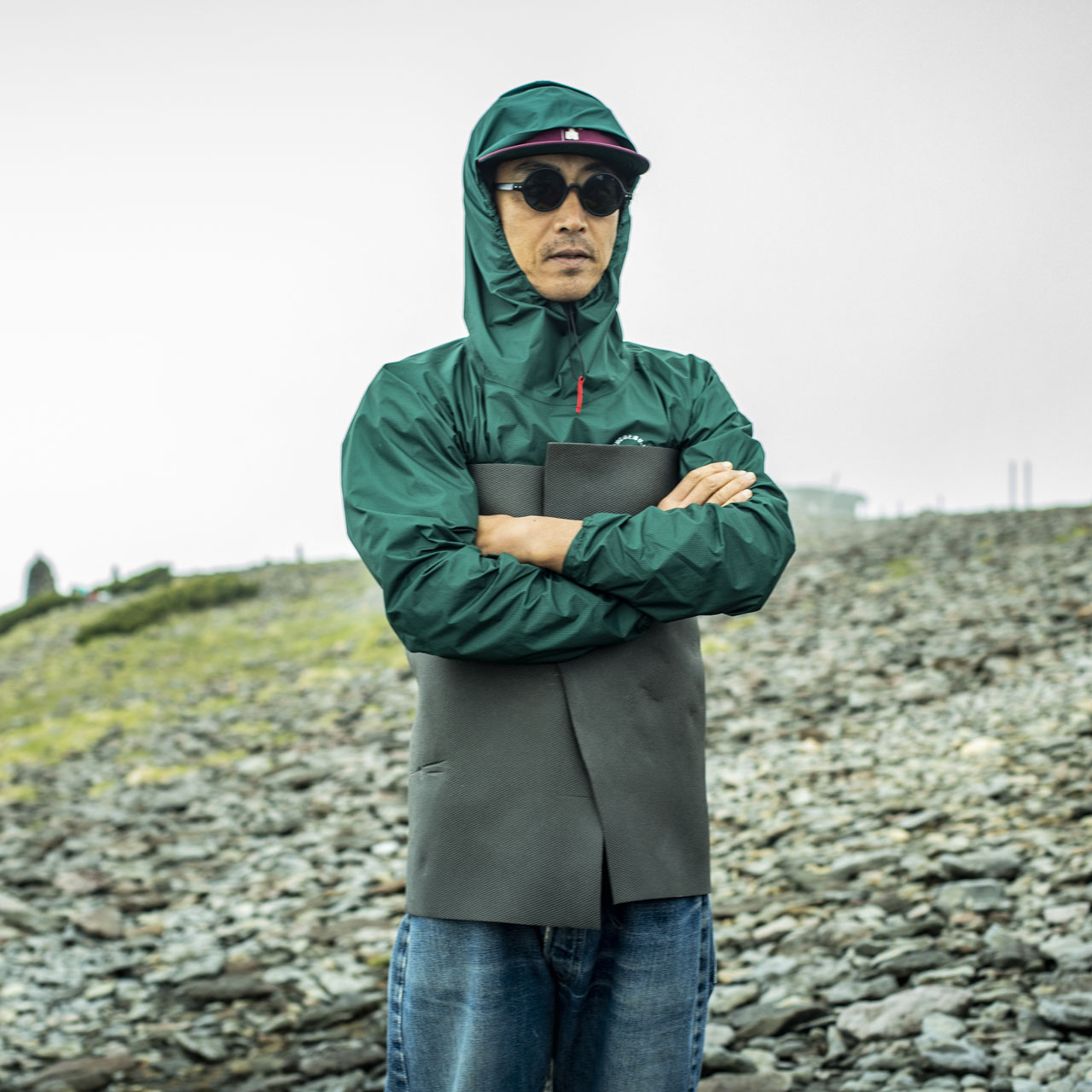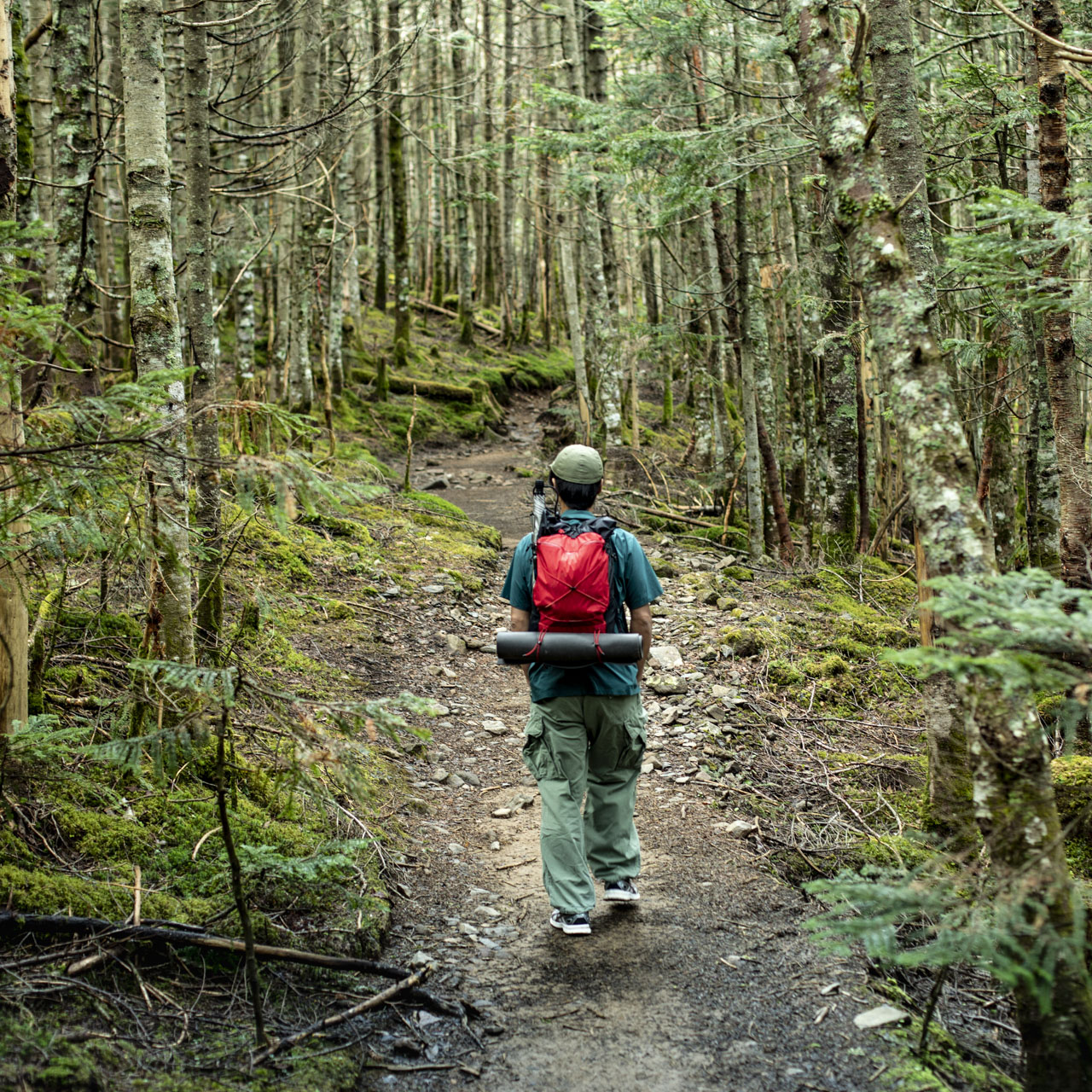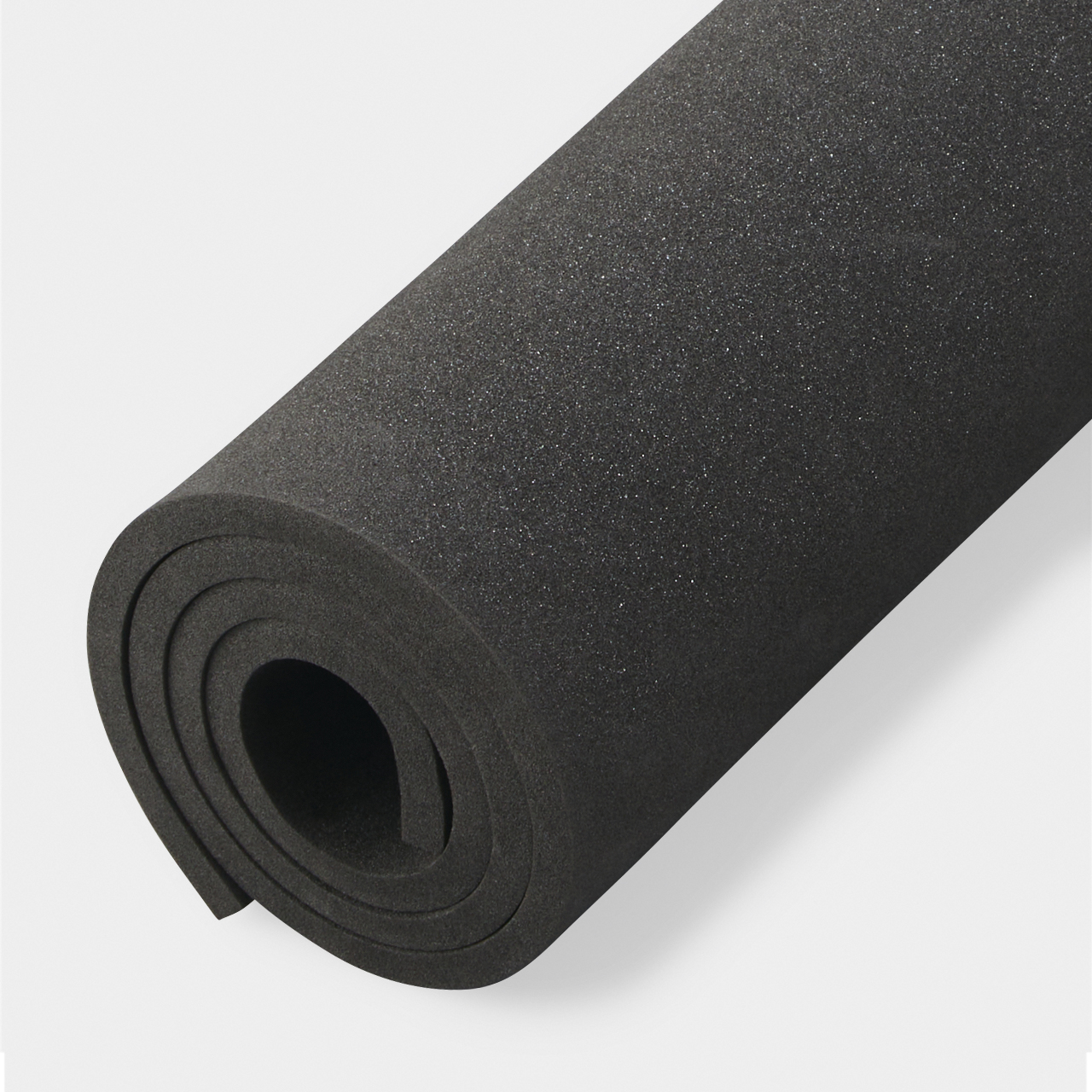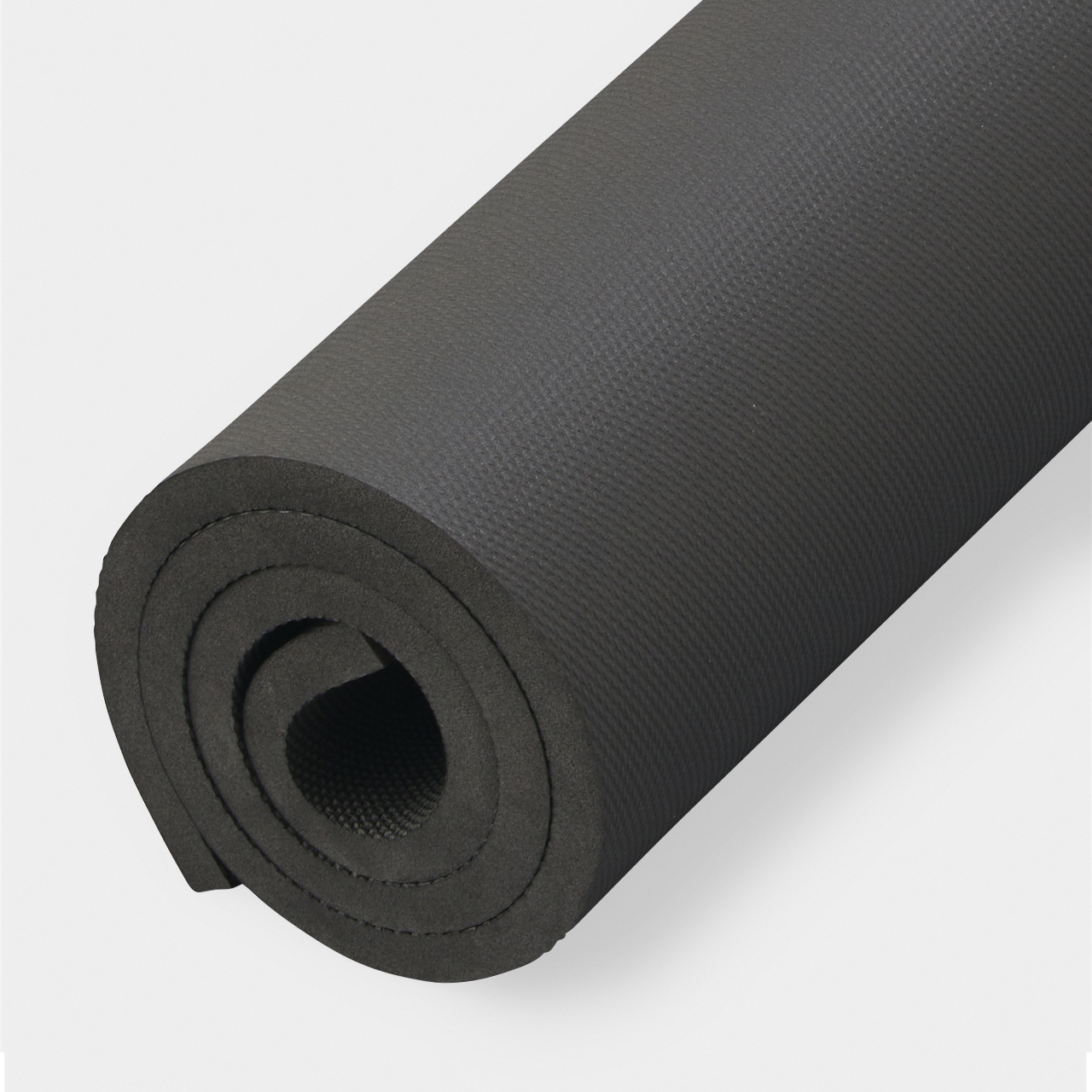Introduction
A Minimalist Sleeping Pad
This ultralight 5mm sleeping pad is crafted from highly insulating XLPE foam and features a heat-pressed, textured surface for enhanced durability. Designed for minimalists, it offers exceptional performance while keeping weight and bulk to an absolute minimum.
Its versatility knows no bounds: use it solo, pair it with another sleeping mat for extra insulation, stack two together, wrap it around your body for added warmth, or tuck it inside your sleeping bag. Weighing just 53g, this pad redefines ultralight functionality, making it an indispensable tool for minimalist adventurers.
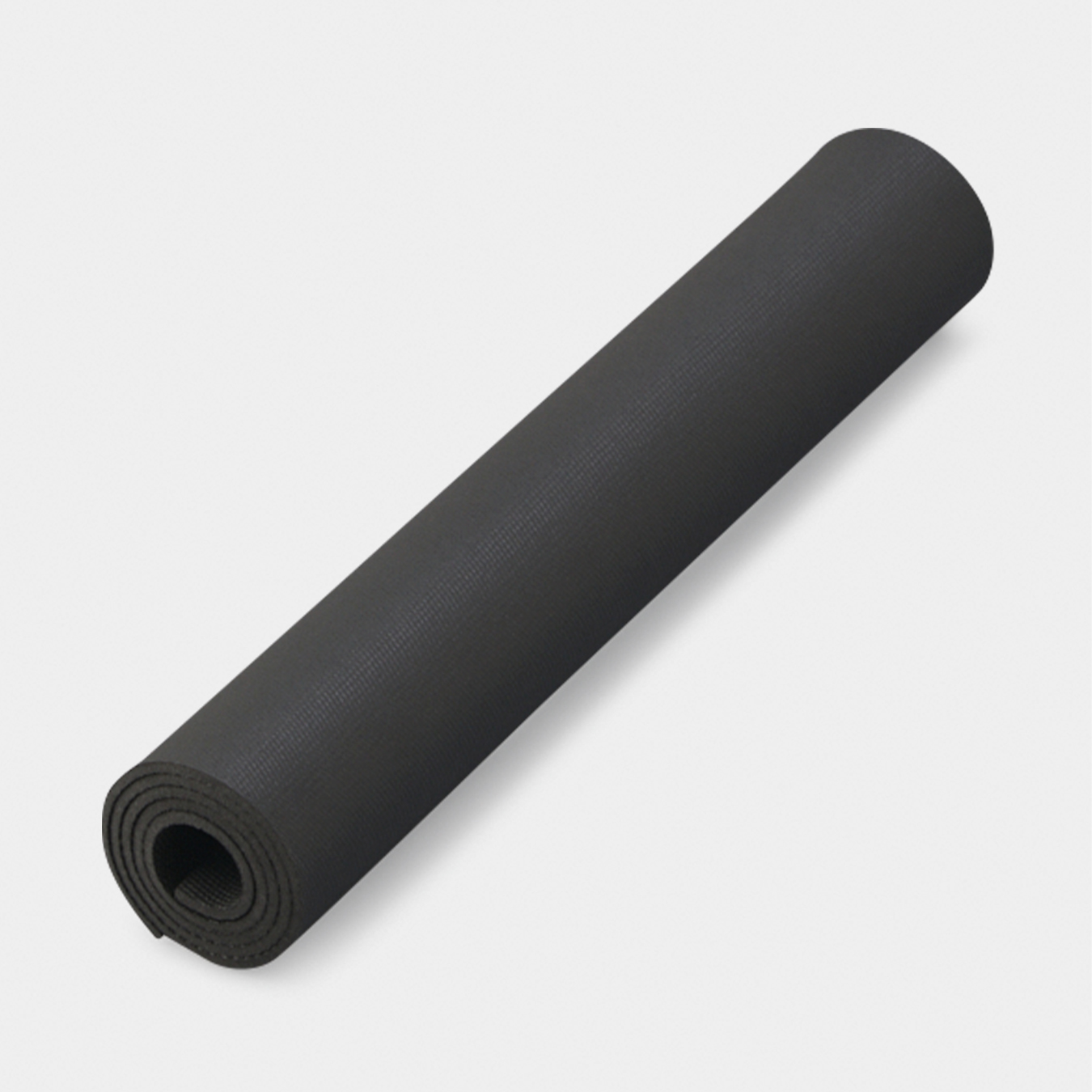
Product Story
Co-Developer Review
Takuya Kitano from Sky High Mountain Works
The development of the Minimalist Pad can be traced back to Takuya Kitano of Sky High Mountain Works, a bustling outdoor shop in Ashiyagawa in Hyogo Prefecture, who asked for a more compact sleeping pad that he could use for fastpacking.
After we received this request from Takuya, a hardcore mountain runner, we sent him several prototypes until he was happy with the Minimalist Pad, so we think it’s best that he explains what he thinks of the pad.
Impressions from Takuya Kitano of Sky High Mountain Works, co-developer of the Minimalist Pad
My favorite style of mountaineering at the moment is fastpacking, which combines trail running and trekking, with a focus on speed and distance that’s quite different from regular hiking. When you’re fastpacking, if you need to sleep you stop running and hiking and recover for a little from the fatigue.
Unlike with normal hiking, when you’re trail running or fastpacking you’re heading out into the mountains with the intention of running, so your camping gear needs to be super lightweight. The more I run, the more I start competing against myself, which means I end up reducing the amount I sleep until it’s little more than occasional naps. Since a sleeping pad spends so much time in my bag, not in use, every gram counts.
When it does come to camping you might think that you have to find a balance between comfort and weight, but when you’re fastpacking you really have to focus on making all the gear as light as possible. The three most important points when considering a sleeping pad for fastpacking are “compactness,” “lightweight,” and “comfortable enough (which obviously differs depending on the person).”
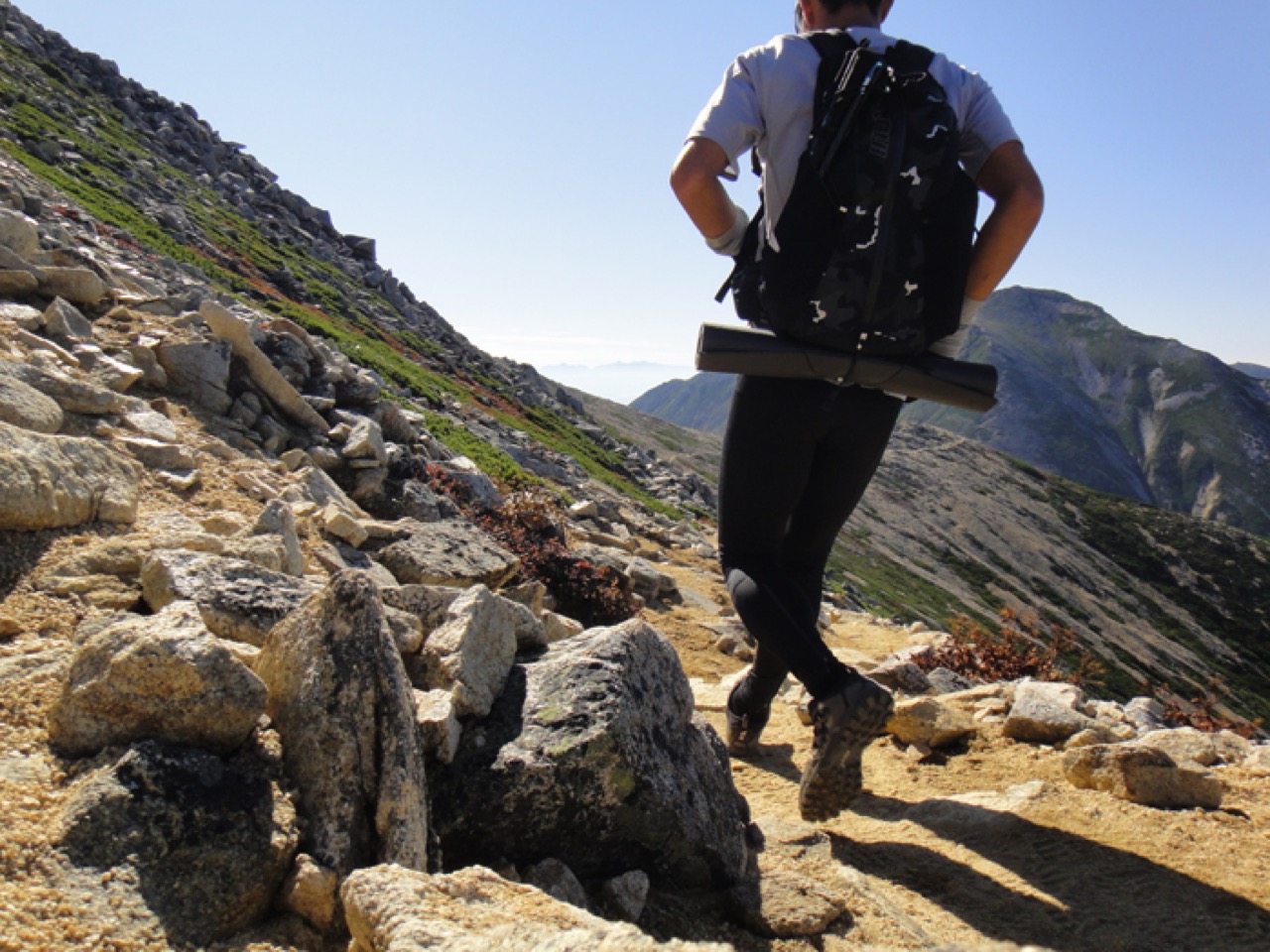
Air mats and inflatable mats might be more compact, but I’d be scared to set up one of those in an area with loose stones for fear of getting a puncture. Then there are closed-cell mats, which are very lightweight and have no risk of punctures, but they’re not as compact as I would like.
When Yamatomichi released their UL Pad, I was blown away by how lightweight it was. However, even after cutting out everything unnecessary I found that it was still too big, far from the compact ideal for fastpacking, and I think it was too focused on comfort. That’s when I had a eureka moment. I realized, “this Yamatomichi mat would probably be comfortable enough even if it was half the thickness.”
They were kind enough to send me a sample, and though obviously, your personal preference may vary, I found it comfortable enough, even though I tend to get cold easily. What’s more, with the new thinner design not only would it be rollable, but with some scoring you could even fold it up into four and fit it inside your bag! Until now mats have to be attached on the outside of the pack, which can be annoying when running trails that require more technical skills, but now it’s no problem at all.
The first mat they sent me was a normal sleeping pad, so I naturally had no problem with its thermal insulation, but the mat surface seemed to get damaged easily, which worried me. Yamatomichi applied their technical wizardry and pressed the surface of the mat to make it more durable and less susceptible to scratches, and they even managed to increase its insulating properties.
We didn’t settle on the size of the final product until the very final moment. With a focus on reducing the weight and keeping it compact, I thought a size of 80×45 cm with a weight of 44 g would be ideal, but when I started thinking about how other people might want to use it I realized that my ideal might be a bit too small, and so decided on 100×50 cm, which is big enough to cut down to any size you need.
If you’re the type who wants a lightweight and compact pad then you have to work out for yourself what temperature will be comfortable and what kind of clothing you’ll need for when you sleep when using the Minimalist Pad. You need to know what you want out of it, and if necessary use it in conjunction with an air mattress, or use an air mattress as your main mat and use the Minimalist Pad as a booster if you really can’t stand the cold.
This mat was designed for fastpackers and trail runners, but it’s also useful for regular and UL hikers who need a booster to top up their usual sleeping pads, or who want a luxury seating pad for when they take a break.
Form and Function
Unmatched Lightness and Warmth
The Minimalist Pad is made from highly insulating XLPE foam.
Thanks to its closed-cell structure, XLPE foam is water-resistant, making it ideal for use on snow or wet ground. It’s also eco-friendly, as no chemical foaming agents are used in its production.
To enhance durability, the 0.7cm foam is heat-pressed on both sides, reducing its thickness to 0.5cm. This process strengthens the surface while maintaining its excellent insulation properties.
Generously sized at 100cm x 50cm, the Minimalist Pad can be easily customized to your needs with a utility cutter or scissors. With its lightweight and versatile design, it’s a perfect choice for ultralight adventurers who value both function and adaptability!
Pro Tip: Use a utility cutter and firmly press with a ruler for a clean, one-pass cut. Repeated cuts may result in uneven edges.
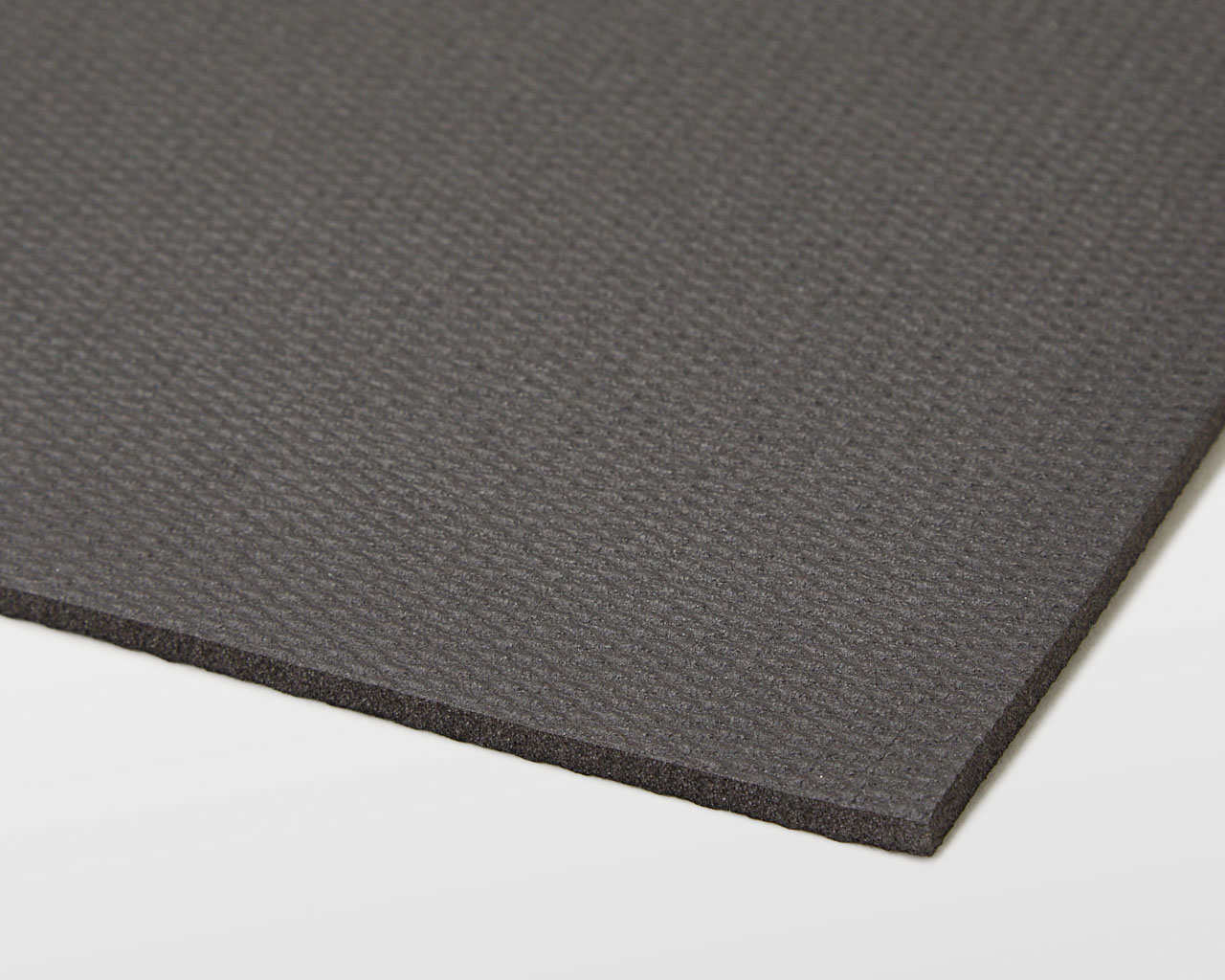
Lineup
The UL Pad series includes three types: UL Pad 15, UL Pad 15+, and the Minimalist Pad, each designed to suit different temperaturesn and seasons.
Note: Warmth and comfort levels vary by individual. Be sure to choose based on your personal experience and the conditions you plan to use it in.
Thickness and R-value
The R-value is a key indicator of warmth: the higher the number, the better the insulation. Cascade Designs, creators of the “ASTM F3340-18” standard and parent company of Therm-a-Rest, offer the following guidelines: an R-value of 1–2 is ideal for summer use, 2–4 works well for spring to autumn (three seasons), 4–6 is suited for winter conditions, and anything above 6 is recommended for high-altitude or extreme cold.*
For an in-depth look at sleeping pad types, R-values, and insulation performance, don’t miss our JOURNAL article Ranking Sleeping Pads by R-value. Let it be your go-to resource for finding the right pad for your adventures.
*Comfort temperatures varies by the individual.
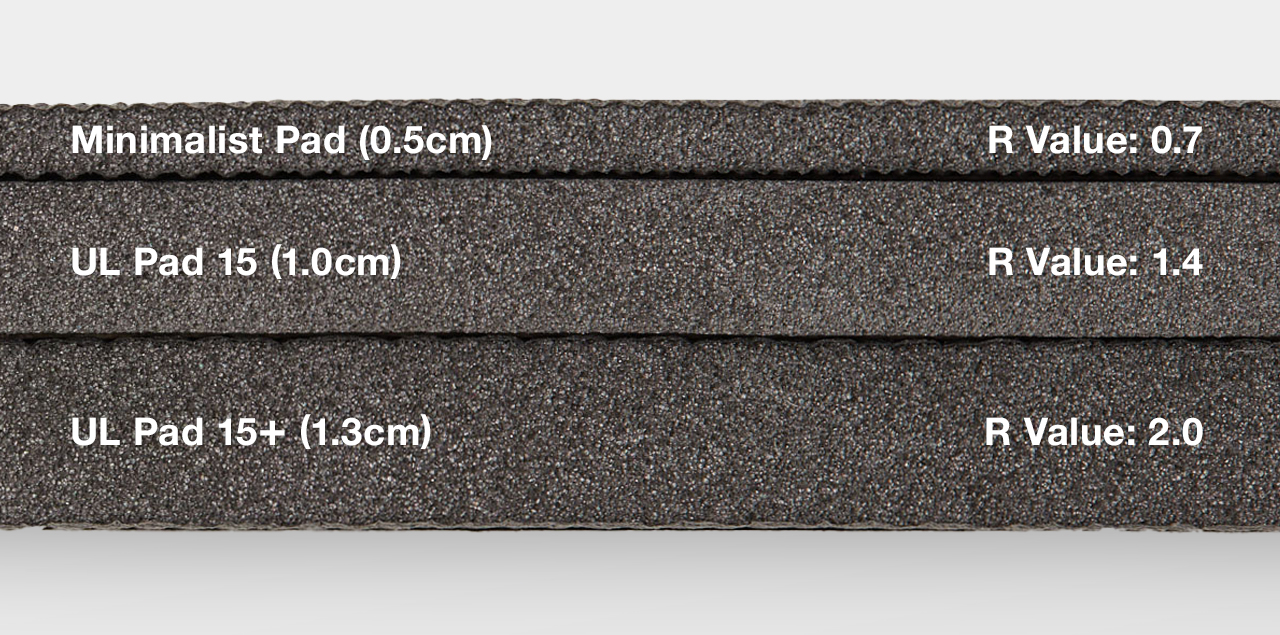
Combination Examples
The Minimalist Pad, designed with ultimate simplicity in mind, has surprisingly revealed countless uses after its development. With its unexpectedly high insulation and incredible lightweight design at just 53g, it invites you to explore a variety of creative ways to make the most of it.
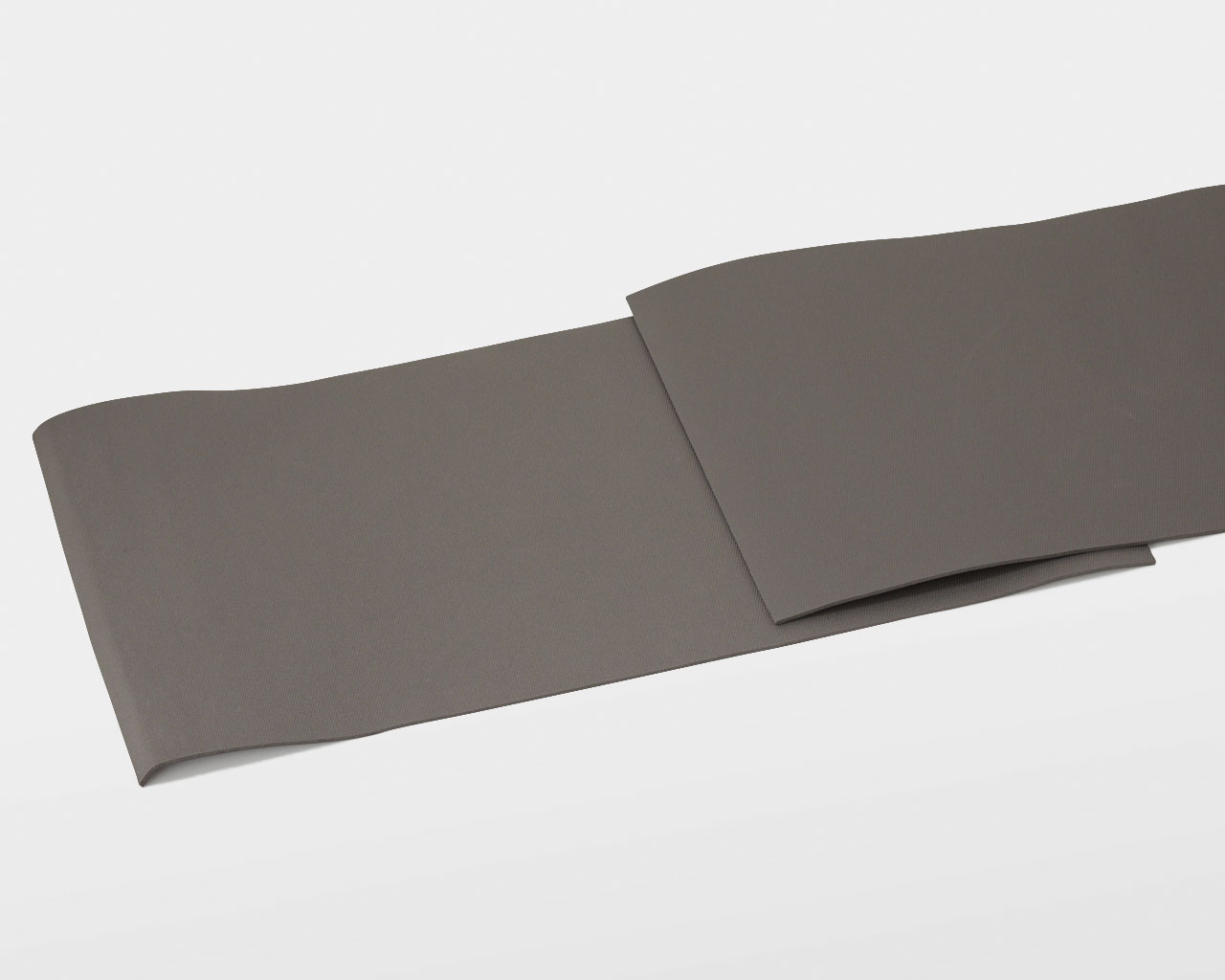
Using Two Minimalist Pads
At just 53g each, Minimalist Pads are light enough to double up effectively. Layering two pads creates a 1cm thick mat with an R-value of 1.4, equivalent to the UL Pad 15. Alternatively, you can double them up only under your hips—where warmth is most needed—while keeping a single layer elsewhere, creating an ultralight full-body pad. This flexible approach is particularly recommended for MINI/MINI2 users who already use a Minimalist Pad as a back panel.

Combining Other Sleeping Pads
Pairing the Minimalist Pad with a 100cm UL Pad 15 (75g, R-value 1.4) creates a lightweight mat system with 1.5cm thickness, weighing 128g and achieving an R-value of 2.1. Alternatively, combining it with a 100cm UL Pad 15+ (113g, R-value 2.0) results in a 2cm thick mat, weighing 192g and offering an R-value of 2.7, delivering excellent cushioning and insulation. For an ultralight full-body setup, you can overlap the pads only at the hips for targeted warmth and comfort.
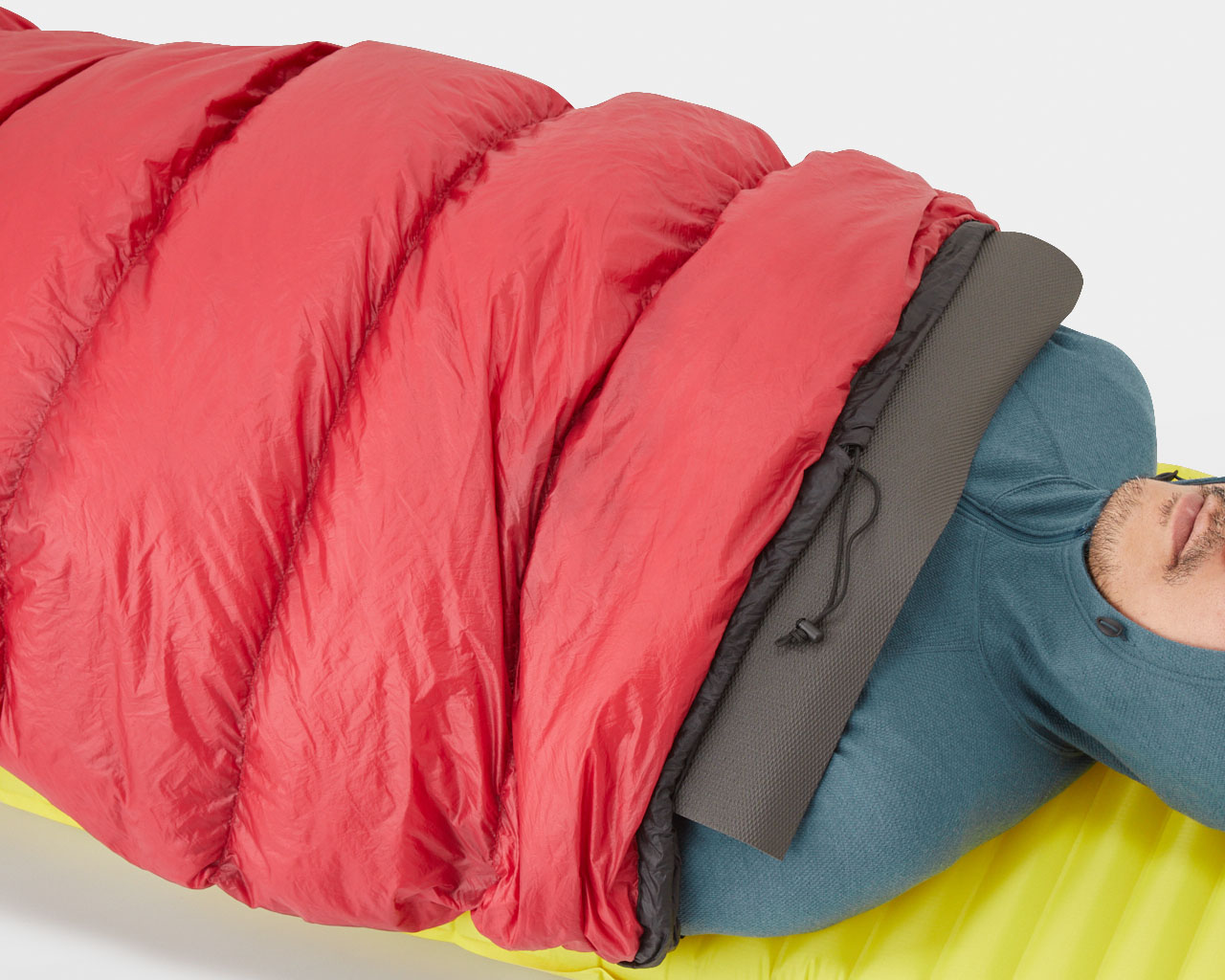
Place it in your sleeping bag
When feeling chilly, place the pad over your body inside your sleeping bag to retain heat (note that its non-breathable material may cause slight condensation between the pad and your body). Alternatively, placing it under your body inside the sleeping bag can enhance warmth and comfort.
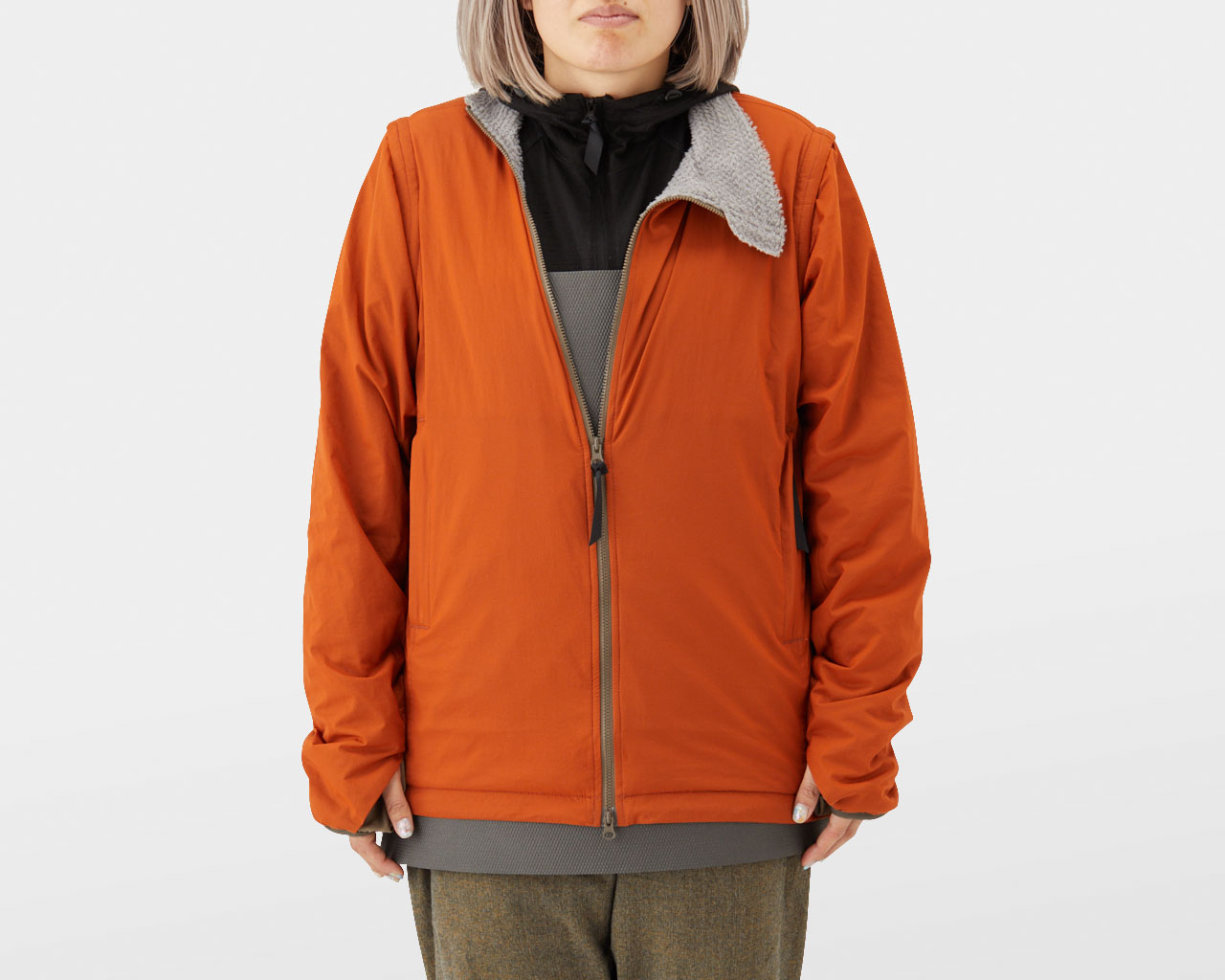
Wrap it around yourself
This is primarily an emergency use, but there’s a case where a Yamatomichi staff member avoided hypothermia during an outing by wrapping the Minimalist Pad around their stomach. Especially when worn inside a jacket or other layers, the Minimalist Pad’s surprisingly effective insulation can provide critical warmth in challenging situations.
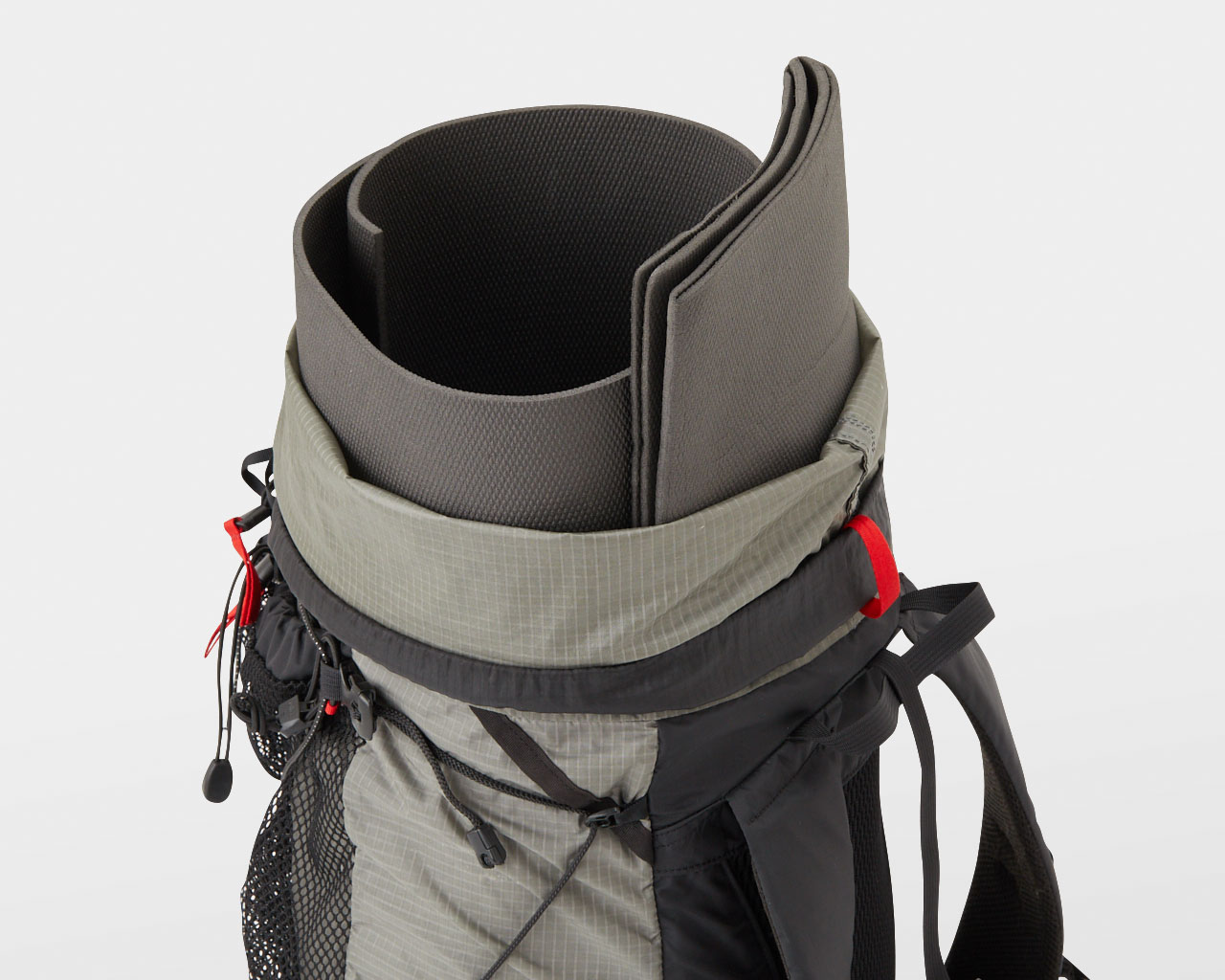
Backpack Back Panel or Frame
As integrated into the MINI/MINI2, the Minimalist Pad can be folded and stored in the back of a frameless backpack to serve as a back panel. Additionally, rolling the pad to fit along the inner perimeter of your backpack helps stabilize packing and improve load management, enhancing overall comfort and organization.
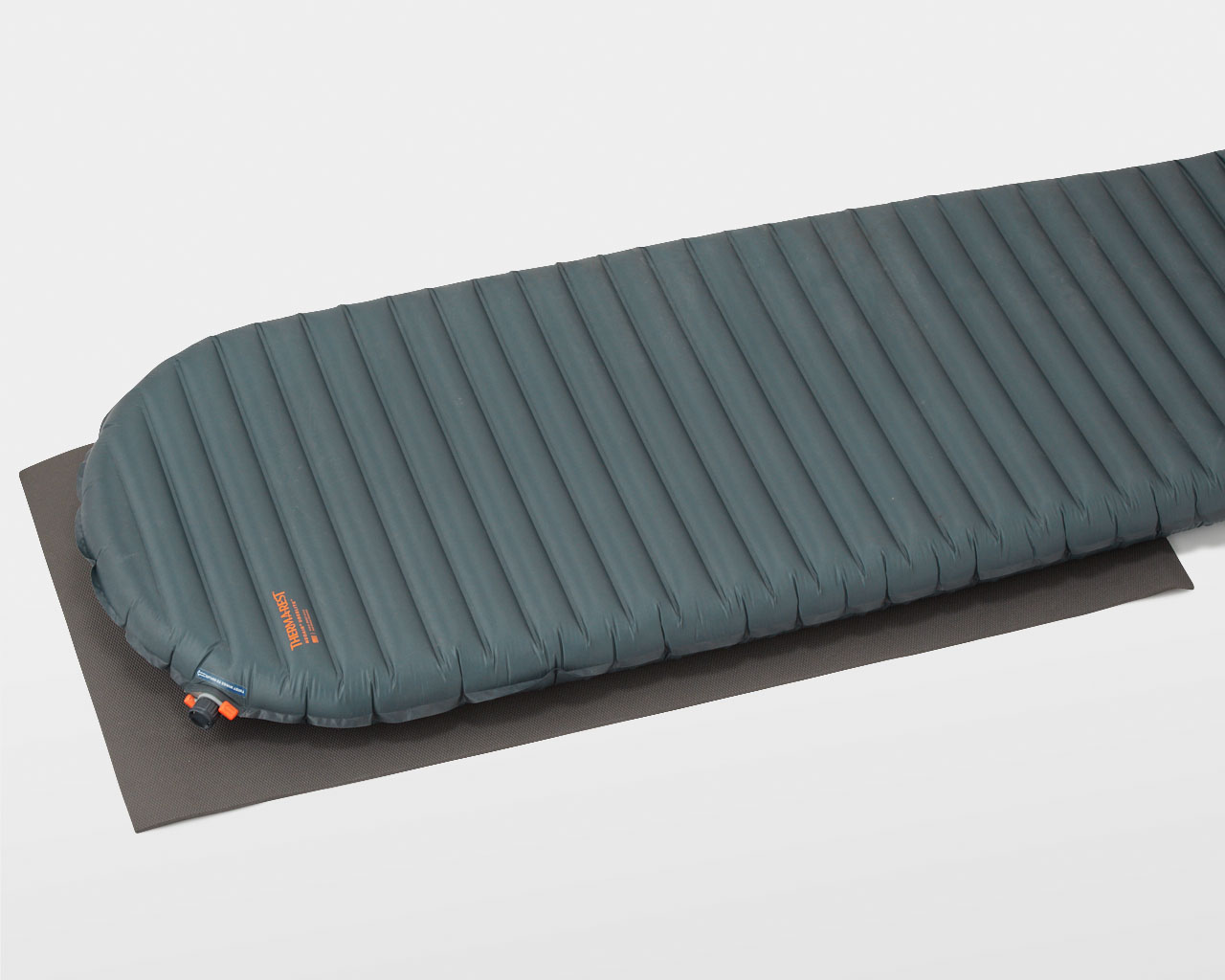
Extra Protection with Airmats
Air mats are valued for their lightweight design and compact storage but come with the risk of punctures. By placing the ultralight Minimalist Pad underneath, you can protect the air mat from potential damage and have a reliable backup in case of a puncture, ensuring peace of mind on your adventures.
Instructions
Please Note
Due to its ultra-light weight, please be careful that the pad is not blown away.
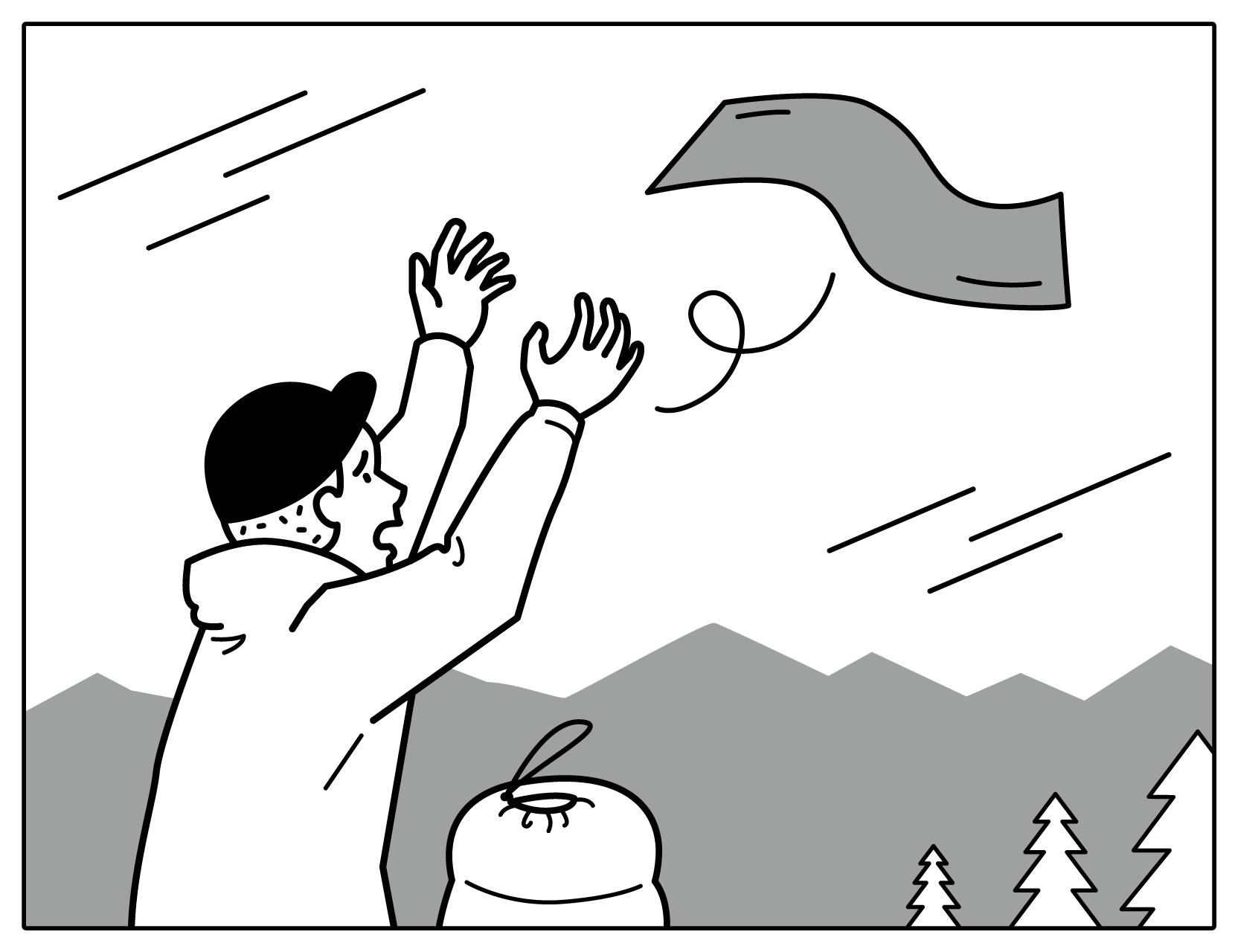
- To avoid unnecessary damage, please handle with care and choose a flat surface when sleeping. Avoid rocks and sharp surfaces when possible.
- The material is anti-slippery, so it is easy to apply excessive force when using it as a frame for a backpack. Handle with care.
- If you pull or push it too hard, it is likely to get damaged.
- Scratches and signs of use will remain on the surface of the material.
- Please consider using this pad in combination with other pads (layering) in snowy mountains.
- Lay it inside your sleeping bag for extra warmth.
Care Instructions
Care Instruction Page
Visit our dedicated Care Instructions page for detailed guidance on maintaining your product. Proper care ensures extended functionality and helps you get the most out of your purchase.
Payment
- We only accept payment by credit card. We currently do not accept payment via bank transfer from overseas accounts.
- We accept the following Credit Cards: Visa, Master, American Express, and JCB.
- To download your receipt, please click the link included in the Dispatch Notice, which we will send by email as soon as the items are dispatched.
- Bank transfer is only availble for those that own a Japanese bank account.
Delivery
- Order Confirmation will be sent after the order.
- The items will be dispatched within 3 days after the payment is confirmed.
- The dispatch notice will be sent by email as soon as the items are dispatched.
- The delivery may be delayed by unforeseeable reasons such as natural disasters and other logistics issues. We appreciate your patience and understanding.
- We cannot ship multiple orders in one package due to how our delivery system is currently set up.
- We will ship to regions in North America, Oceania, and Europe (excluding Russia) via DHL. For regions in Asia, the Middle East, Central and South America, Africa, and Russia, we use EMS (International Express Mail Service) for shipping.
- Shipping fees and delivery times vary depending on the shipping destination as well as the size and weight of the items.







